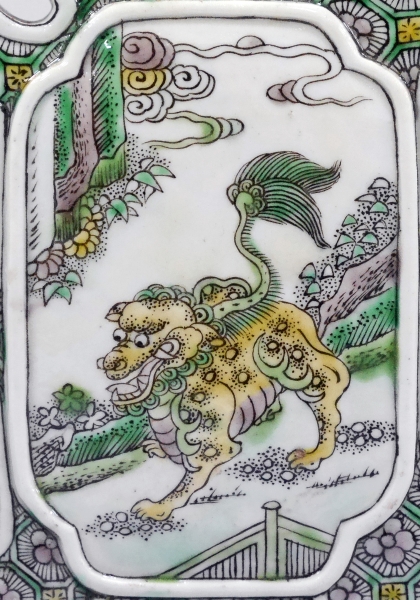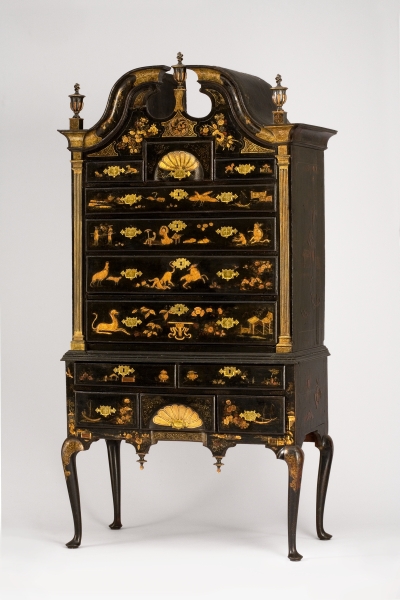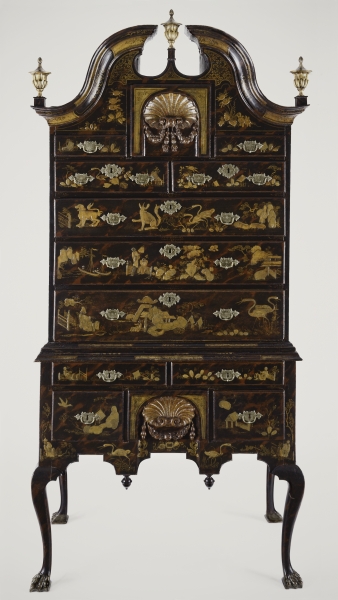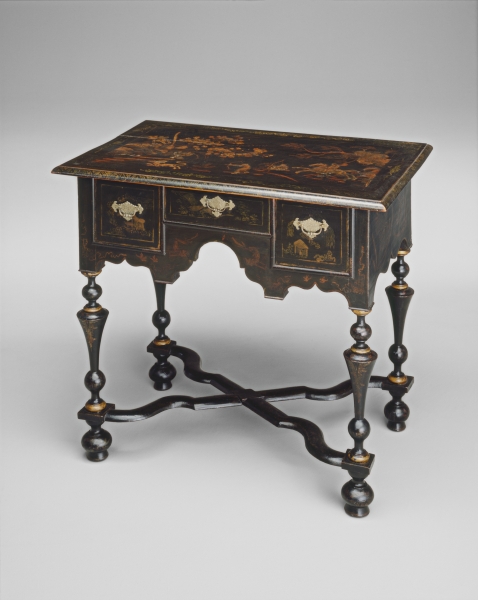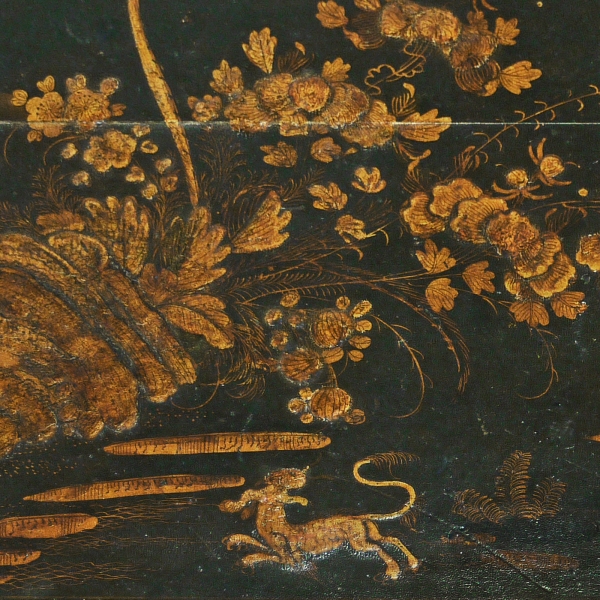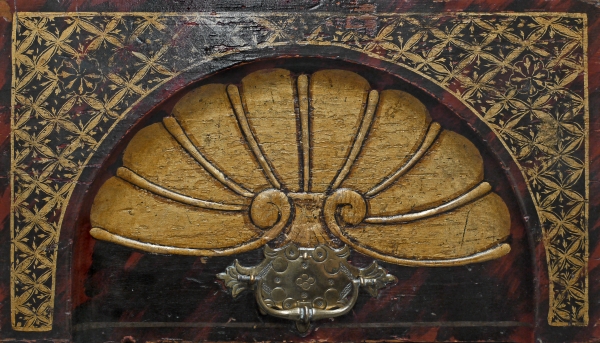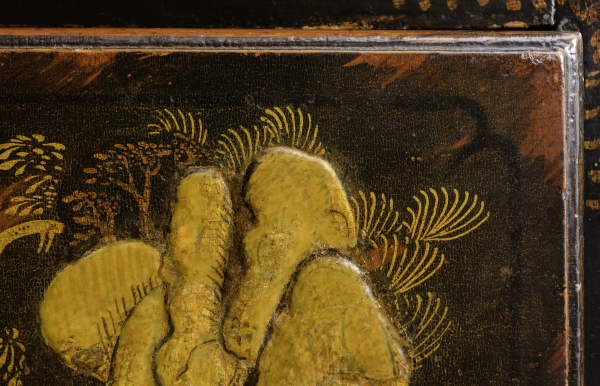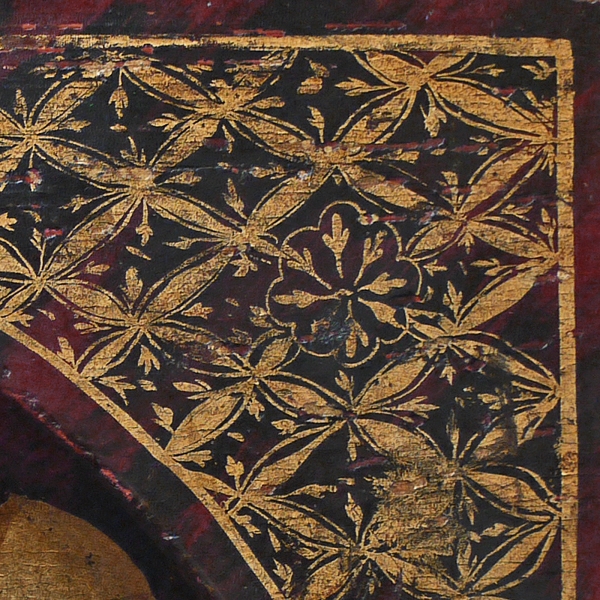· 3 ·
“Tortoiseshell & Gold”:
Robert Davis and the Art of Japanning in Eighteenth-Century Boston
TARA HINGSTON CEDERHOLM AND CHRISTINE PALMER THOMSON
Over the years, scholars of American furniture have found the japanning tradition in eighteenth-century Boston to be an endless source of fascination and frustration. Many have written on the subject, tracing the origins of particular objects, tracking provenance, and searching for information that would shed light on the craftspeople who did this remarkable work, yet we still know precious little about them. In the context of American decorative arts, japanning is purely a Boston phenomenon. Although japanners advertised in other colonial cities, such as New York and Philadelphia, it is the work from Boston that survives today. We know the names of several artisans associated with Boston japanning, but rarely did they sign their work. A few notable exceptions bear mention: the signatures of Robert Davis and William Randle and a label by Thomas Johnston have survived to give us clues to their working styles. For the majority of surviving Boston japanned furniture, however, the identity of the decorators remains anonymous.1
In 2004, a Boston japanned high chest in well-preserved condition appeared on the market (fig. 1). On the underside of an upper drawer is the boldly painted signature of its japanner, Robert Davis, who was clearly proud of his work (fig. 2). Prior to this event, only one known object with surviving japanning was signed by Davis: a high chest at the Baltimore Museum of Art (fig. 3). Much of the surface decoration on the Baltimore Museum high chest is missing or buried under darkened varnishes, but with this new discovery, the distinct style of this craftsman became more discernible. These two examples show that Davis was a highly skilled draftsman with a confident and graceful hand; his work exhibits flourishes as distinct and unique as a signature.
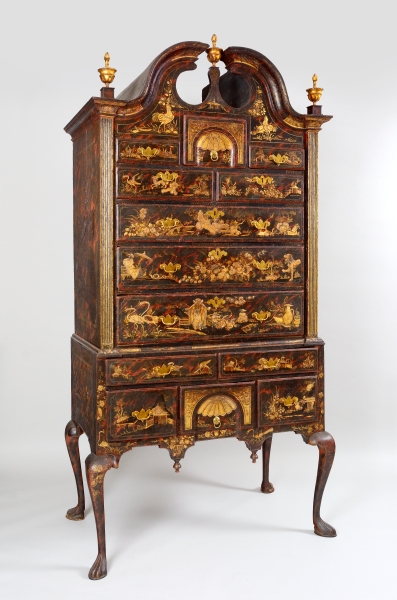
FIG. 1. High chest of drawers, japanned by Robert Davis (d. 1739), Boston, 1735–39. Maple, white pine; h 82, w 42⅜, d 23¾. Private collection. Photo, David Stansbury.
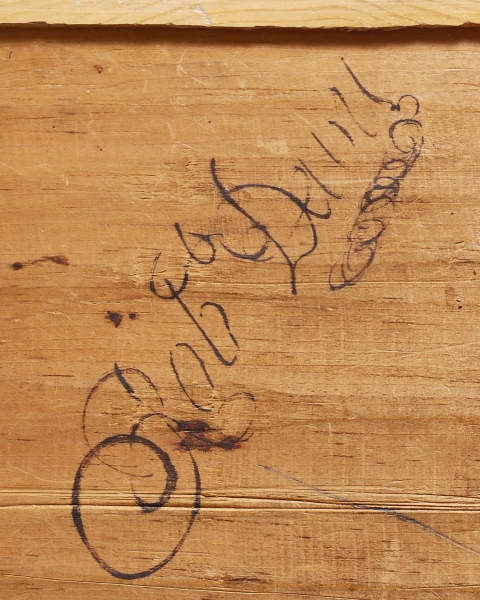
FIG. 2. Signature of Robert Davis on the underside of the drawer of the high chest in fig. 1. Photo, K.C. Cederholm.
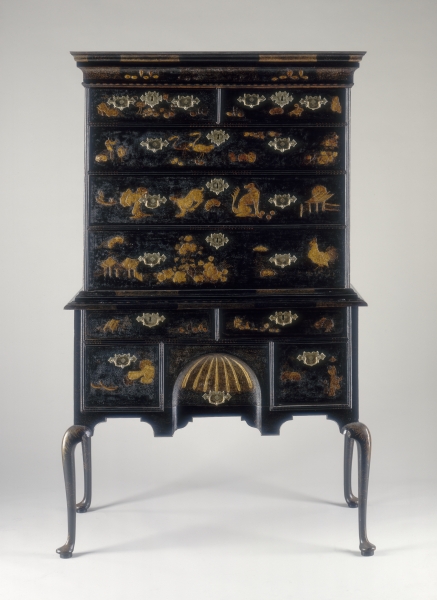
FIG. 3. High chest of drawers, japanned by William Randle (active in Boston 1715–33) and Robert Davis, Boston, 1730–35. Maple, white pine; h 681/16, w 43¾, d 24½. Baltimore Museum of Art; Purchased as the gift of Mr. and Mrs. Francis C. Taliaferro, in Memory of Mr. and Mrs. Austin McLanahan (1970.37.4).
The opportunity to examine the work of Robert Davis gave birth to our idea of methodically comparing imagery on signed and unsigned pieces, with the expectation that the Boston japanners would be distinguishable by their distinctive styles. To identify characteristics in japanned decoration that were particular to Davis, we photographed each motif on the signed high chests and entered them into an image database.2 We then photographed the decoration on thirty-nine of the fifty-three known Boston japanned objects to compare the motifs and styles with Davis’s.3 We tagged each motif with specific keywords, which allowed us to sort for a particular type (e.g., “crane,” “flower bouquet,” or “building”). Initially, we thought these images would fall into recognizable groups, even if we were unable to assign each group to the hand of a known japanner. Yet, the strict protocols of technique and iconography that all japanners followed made it difficult, in some cases, to identify a particular hand.
The parameters of our study grew dramatically once we realized that, to give better context for our observations, we needed to study and catalogue not only the imagery on all known Boston examples but also the decoration on japanned pieces from other areas where the style flourished, namely England, Europe, and South America. In addition, we sought to find sources of inspiration for the Boston japanners in prints, ceramics, and lacquerwork.
To date, we have compiled a list of fifty-three Boston japanned case pieces and clock cases, some of which are known only by photographs (see appendix).4 The types of japanned case forms from the first half of the eighteenth century in Boston are relatively few: flat-top high chests with either turned William and Mary–style bases or cabriole legs, bonnet-top high chests (with scrolled pediments), clock cases, dressing tables, a bureau table, and a slab-top table (fig. 4). We know of no surviving tea tables decorated by Boston japanners, although the form is often noted in period inventories. For example, the July 29, 1739, probate inventory of Isaac Royall Sr., in Medford, Massachusetts, lists amongst his possessions a “Japanned tea table.”5 We know that Davis decorated tea tables with japanning because his probate inventory included such pieces both “japann’d” and “not finisht.”6
|
High chest; flat top, turned base |
15 |
|
High chest; flat top, cabriole legs |
10 |
|
High chest; bonnet top |
9 |
|
Clock case |
12 |
|
Dressing table; turned base |
1 |
|
Dressing table; cabriole legs |
4 |
|
Bureau table |
1 |
|
Table; slate top with turned base |
1 |
|
TOTAL |
53 |
FIG. 4. Known forms and quantities of surviving American japanned furniture.
WHAT IS JAPANNING?
In 1943, the scholar and practitioner of early American decoration Esther Stevens Brazer defined japanning as “the art of painting in varnishes after the manner of lacquered cabinets and screens imported from the Orient.”7 This is an accurate description of what we today think of as japanning. In the eighteenth century, however, the term japanned did not necessarily imply decoration, chinoiserie or otherwise. When we think of japanning, it is the delicate gilt chinoiserie-style ornament and visual flights of fancy that usually come to mind, but the eighteenth-century definition of the verb to japan simply meant to coat something with a pigmented resin-based varnish (usually black) and then polish it to achieve a smooth unblemished surface, in imitation of Japanese and Chinese lacquerwork. In the eighteenth century, in both England and America, the term Japan work also denoted a decorated surface in the Asian style. So, an object that is described as “japanned” either could be varnished and decorated or may simply have had a plain but glossy surface.
In late seventeenth-century England, primarily in Pontypool, an entire industry sprung up to meet the demand for domestic tinware coated with colored (mostly black) oil-based varnishes, and it eventually spread to America. Also called japanning, the coating was applied primarily onto metals to create a surface that was rustproof but also attractive, durable, and affordable. Everyday objects, such as fishing lures, tea caddies, fireplace tools, carpenters’ planes, and a wide variety of containers, were typical of those given a japanned coating. Such items were often decorated with stenciling, floral designs, and even chinoiserie ornament in imitation of East Asian lacquer, but many were simply left plain.8
The exotic beauty and lustrous surfaces of Asian lacquer objects, coupled with limited availability, inspired European craftspeople to find ways to re-create the appearance of the glossy grounds and delicate gilded designs using the resins and varnishes with which they were already familiar. This European interpretation of East Asian lacquerwork was described in the period as “Japan Work,” “Japanning,” “Indian Work,” or “Bantam [Indonesian] work,” suggesting the lack of geographical awareness at the time. Both India and Indonesia acted as transshipping ports for English trading companies in the seventeenth century, adding to the confusion about the origins of Asian lacquerwork.
JAPANNING IN A GLOBAL ECONOMY
No style or technique is developed in isolation, and japanning is a perfect example of the interplay of ideas and influences. The technique was not an invention of Boston craftsmen. It was a skill developed and refined in Europe, first in Holland and then in England, in response to the overwhelming demand for Asian lacquer in the seventeenth century.
By the early years of that century, Europe was in the midst of a craze for all things Asian. Porcelains, silks, and lacquers, all goods that could not be manufactured in Europe, had begun to reach the Continent as early as the sixteenth century. The importation of Japanese and Chinese lacquered goods into the Western world introduced Europeans to a new aesthetic. Lacquerwork had no precedent in the West, and the properties of real East Asian lacquer (urushi in Japan, qi in China), as well as the techniques required to work with the medium, were unfamiliar to European craftsmen.
Lacquerware from Japan and China was an exotic and a precious commodity. Objects like this Japanese box (fig. 5), inscribed inside the lid “Maria van Diemen,” made their way to Europe in the second quarter of the seventeenth century. Maria van Diemen was the wife of Anton van Diemen, the governor-general of the Dutch East Indies from 1636 to 1645. This Japanese document box with an interior tray was likely brought or sent back by Van Diemen for his wife. A similar box made for Petronella Buys, the wife of Philips Lucasz, director-general of the Dutch East Indies, was probably brought back at the same time.9 Smaller objects such as boxes were easily transported to Europe. Larger boxes, which normally rested on the floor in Japan, were raised on gilt-wood stands, re-creating the “cabinet on stand” form already popular by the second quarter of the seventeenth century (fig. 6).10
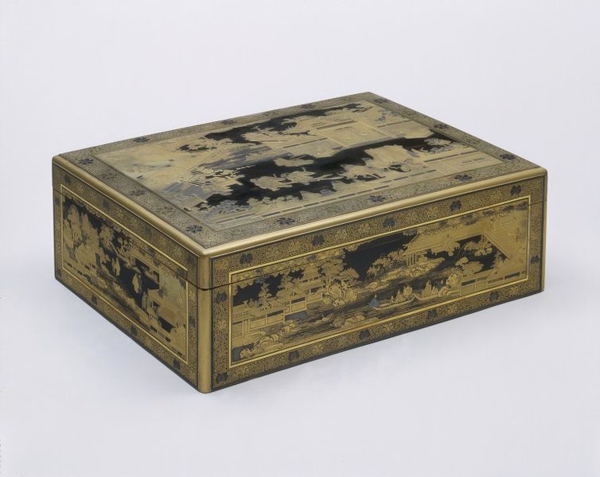
FIG. 5. Document box (The Van Diemen Box), Japan, 1636–39. Wood, covered in black lacquer, with gold, silver and red hiramaki-e and takamaki-e lacquer, gold and silver foil; h 65/16, w 19, d 14½. Victoria and Albert Museum; Given by the children of Sir Trevor Lawrence, Bt (W.49-1916).
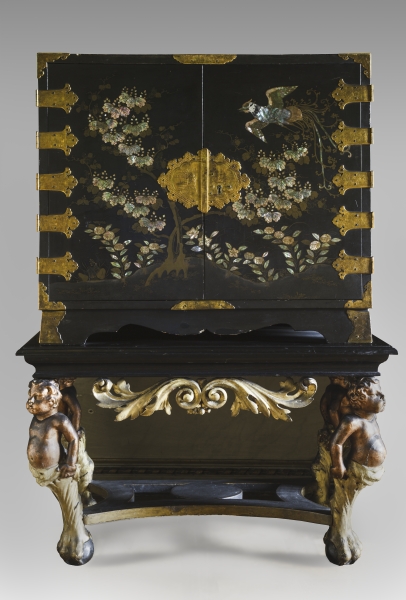
FIG. 6. Cabinet on stand. Cabinet: Kyoto, Japan, 1630–50. Lacquered wood with gold and red, mother of pearl, brass. Stand: England, ca. 1670. Bronzed and gilded wood. Overall h 42, w 30⅜, d 18½. Ham House; National Trust (1139896.1, 1139897.2). Photo, © National Trust Images/John Hammond.
Although the lacquerware exported from Japan in the seventeenth century is of uniformly higher quality than exported Chinese lacquer, the latter also made its way to Europe in large quantities. Chinese lacquer screens, made up of eight to twelve panels, were among the more popular exports. They were often called “Coromandel” screens, based on a misunderstanding that they were produced in India along the Coromandel Coast. In fact, they were created in various parts of China and traded through the ports of India. Developed first for domestic use, they quickly became popular in Europe. The technique employed on these screens was likely developed in China as a cheaper alternative to the more elaborate and costly method of inlaying colored lacquers or carefully cut mother-of-pearl into a lacquer ground. With this work, the lacquer artist has simply carved away areas to create the decoration and then filled those areas with a colored lacquer-based paint.11
Large screens were not a typical European furniture form, so they were not always used in the same manner as they would have been in China. Rather, they often served as raw material, precious at that, to be remade into more familiar forms. They could be incorporated as paneling in rooms or cut and remade into furniture, like the table and looking glass at Boughton House (fig. 7). It is these remade pieces, common at the time, which likely caused John Stalker and George Parker, in their seventeenth-century treatise on japanning, to complain:
And from that large old piece, by the help of a Joyner, make little ones, such as Stands or Tables, but never consider the situation of their figures; so that in these things so torn and hacked to joint a new fancie, you may observe the finest hodgpodg and medley of Men and Trees turned topsie turvie, and instead of marching by Land you shall see them taking journeys through the Air.12
Within this greater global context, the craft of japanning was created and flourished. The market for japanned furniture and decorative arts became vast, for it provided a viable substitute to owning the genuine article.
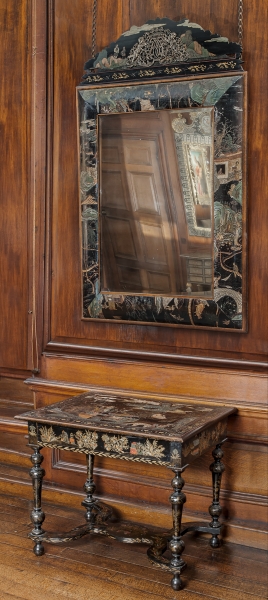
FIG. 7. Table and looking glass, attributed to Gerrit Jensen (active ca. 1680–1715), London, 1675–1700. Looking glass: Chinese lacquer veneer, silvered metal; h 61, w 38½. Table: Chinese lacquer veneer, japanned legs; h 29, w 37, d 27¼. Boughton House; By kind permission of the Duke of Buccleuch & Queensberry KBE.
EARLY RESOURCES FOR THE JAPANNER
Anyone who has taken an interest in japanning and searched for information will have come across references to the aforementioned Treatise on Japanning and Varnishing by John Stalker and George Parker. This remarkable instruction manual, published in London in 1688, thoroughly describes the methods of creating surface decoration in the manner of East Asian lacquer using materials available to English craftsmen. It contains recipes for preparing a variety of colored grounds in imitation of these lacquers and instructions for applying the materials used in decorating on top of that ground. Also included is a collection of designs in the popular chinoiserie style that the practitioner is encouraged to copy. The text is written in a lively, accessible, and entertaining style, suggesting that it was aimed primarily at amateur decorators rather than professional japanners, who would have more likely learned the trade from a master craftsman in the guild system. It was popular and widely circulated to a broad audience.13
The drawn designs at the back of the book consist of buildings, plants, animals, birds, and people (fig. 8); while typical of the types of images found on Chinese and Japanese lacquerwork, they have a decidedly European look. In addition, their execution is often awkward and slightly amateurish, lacking the elegance and refined lines of true East Asian work. Ironically, Stalker and Parker claim that their images are copied directly from Chinese and Japanese sources, citing “the best workmanship amongst them,” but the authors confess to altering the designs when they felt the proportions were “lame or defective.” Their designs appear to have been inspirational rather than intended to serve as patterns to be copied; until recently, no published examples of furniture with ornament taken directly from them were known.14
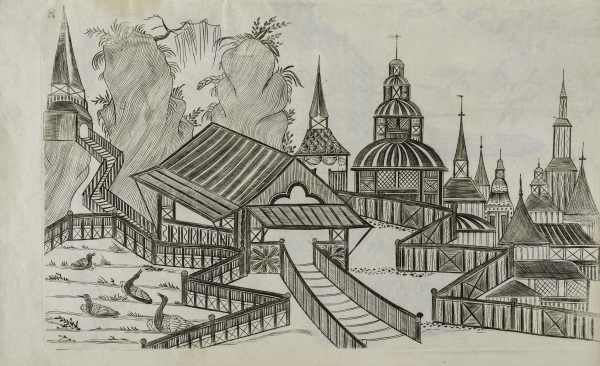
FIG. 8. John Stalker and George Parker, A Treatise of Japanning and Varnishing (Oxford, 1688), pl. 20. Winterthur Library; Printed Books and Periodicals Collection.
How well versed Stalker and Parker were in the practice of japanning is uncertain. Little is known about them, not even whether they were practitioners themselves. Some of their recipes appear to have been lifted from other instruction books, though such plagiarism was common in those days. If Stalker and Parker were the great authorities on the subject, as they wanted readers to believe, one would think they would have had their own unique recipes and methods of application. One cannot help but wonder if details have been omitted from the processes they describe to keep potential competition at bay. When we attempted to re-create recipes from the book, we achieved less than satisfactory results, particularly with “White Japan,” which was difficult to apply and produced nothing close to the intended glossy surface.
Stalker and Parker’s Treatise was not the first book to instruct practitioners about ways to create the appearance of East Asian lacquerwork without using true East Asian lacquer. An earlier work, Polygraphice, or the Arts of Drawing, Engraving, Etching, Limning, Painting, Washing, Varnishing, Gilding, Colouring, Dying, Beautifying, and Perfuming, published in London by William Salmon in 1672 and in several later editions, was also popular. (The 1685 edition was consulted for this study.) Salmon, a physician and scholar, addressed the making of varnishes and replication of tortoiseshell and lapis lazuli with oil paints, but he did not specifically mention Japan work or Indian work. He makes one reference to “China Vernish” that we assume is an attempt to replicate the appearance of East Asian lacquer.15
Another influential text was Treatise on the Varnish Commonly Called Chinese, published in 1720 by Filippo Buonanni, a Jesuit priest. Translated from Italian into French, Spanish, and Dutch, it appeared in seven editions over half a century. A seasoned traveler, Buonanni became interested in “China varnish” and compiled information and recipes for both true lacquer and varnishes using mixtures of different resins as a substitute for East Asian lacquer. Buonanni’s book made clear the difference between the two and put an end to much of the confusion regarding the differing characteristics of each type.16
Published travelers’ accounts also provided early images of China. Two examples are Johan Nieuhof’s Embassy from the East-India Company, of the United Provinces, to the Grand Tartar Cham, Emperor of China . . . , first published in 1665 in the Netherlands and in London in 1673, and China Illustrata, an encyclopedia on China published in 1667 by Athanasuis Kircher, a German Jesuit scholar. Both contain engravings that presumably informed and inspired craftsmen, but so far no exact design matches have been made with any known japanned objects.17
In addition to these instruction manuals and image compilations, many other period sources, in a variety of languages, provide recipes and outline methods for applying varnishes in imitation of real East Asian lacquer. Nevertheless, Stalker and Parker’s Treatise continues to be the best-known text on the subject.
MATERIALS AND TECHNIQUES OF JAPANNING
European japanners developed ingenious methods for creating the glossy, luminous look of Chinese and Japanese lacquer. They chose more familiar and available raw materials, such as shellac and various plant resins, including copal, sandarac, mastic, and a variety of plant gums, mainly because the raw material used by Japanese and Chinese craftsmen was unavailable to them. There was little exportation of East Asian lacquer in its raw form, both because of its value and the difficulty of transporting it. Also, its properties were so different from those of other varnish materials, that European craftspeople would not have known how to use it.
Colored Grounds
Stalker and Parker’s method of japanning, that is, preparing the colored ground, is much more complex than what was used in Boston. For making black japan, the authors recommend that a minimum of twelve layers of pigmented seedlac dissolved in “spirit” be laid onto a primed surface, smoothing with rushes between each few layers.18 The use of spirit varnishes instead of oil-based varnishes ensures that each layer dries quickly (the latter can take up to a week to dry). In fact, the Stalker and Parker method would be more appropriate for applying true East Asian lacquer, which requires as many as forty coats, with careful polishing between each layer, to produce the finished product.
The Boston japanners nearly always chose close-grained hard maple for drawer fronts and, occasionally, case sides, thereby limiting the need for filling the wood grain or other time-consuming preparation. The lacquerlike grounds found on many examples of Boston japanned work consist of only one or two coats of a pigmented layer, followed by one or two coats of a clear varnish. All known Boston case pieces have either a black or a red-and-black mottled “tortoiseshell” background, with one exception: a clock with a movement by clockmaker William Claggett of Newport, Rhode Island. Its background color is a pale blue (now greenish), with gilt designs in the Boston style.19 We have yet to identify a Newport japanner, but evidence suggests either that someone living in Newport was doing Boston-style work or that the japanned case was imported from Boston.20
Surprisingly, no Boston objects with a pure vermilion, or “Chinese red,” ground are known, even though vermilion was a prevalent ground color in England. One exception is a japanned high chest owned by the Metropolitan Museum of Art that exhibits a bright vermilion interior behind the shell-carved prospect door.21 Vermilion, a bright red-orange pigment extracted from the mineral cinnabar (mercuric sulfide), was relatively expensive, but it was certainly available in Boston in the early eighteenth century.22 We have determined through cross-sectional microscopic analysis that, on pieces with a “tortoiseshell” japanned ground, a vermilion layer is laid down first, before the black or dark brown pigments are applied on top, to create a mottled surface.23
Raised Work and Flat Work
Stalker and Parker provide instructions for preparing and applying the gesso-based material, or “paste,” to create raised ornament, which they refer to as “raised work.” Here is another noteworthy difference between what their Treatise recommends and what is evident on Boston work. They instruct that once the raised ornament is dry, it is to be carved to the appropriate shape with small chisels. On Boston japanning, only a few examples show that raised ornament was subsequently carved or modified (fig. 9); in nearly all cases, it was created expeditiously, with one or more layers of paste daubed onto the surface, applied carefully to create such raised details as the drapery on clothing and the wings of birds (fig. 10).
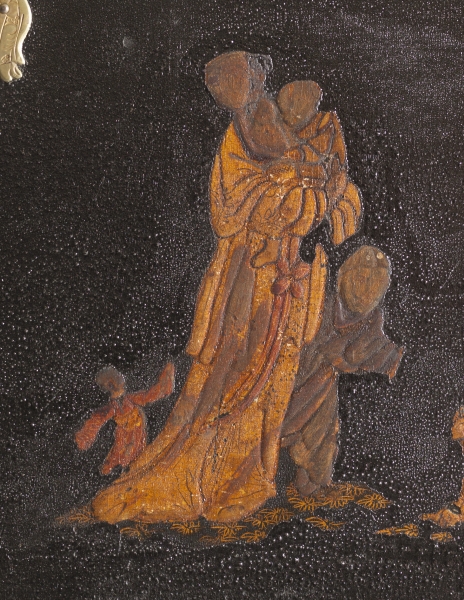
FIG. 9. Carved raised ornament on a high chest of drawers, Boston, 1700–1725. Maple, white pine; h 61¼, w 40⅞, d 22½. Historic New England; Gift of Mary Thacher (1971.72).
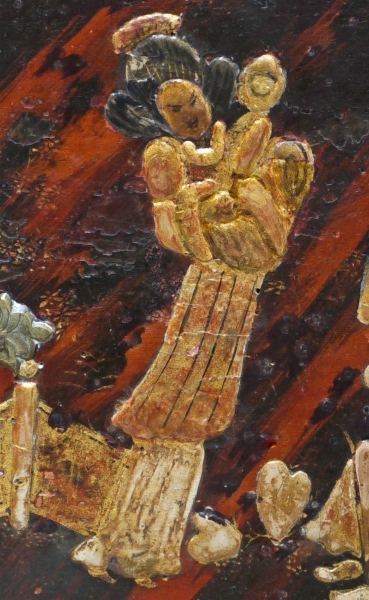
FIG. 10. Daubed raised ornament of the high chest in fig. 32.
The japanner applied the ornamentation, consisting of both gilded raised work and flat work, on top of the prepared colored ground; he then enhanced it with colored glazes and thin black lines called “penwork.” On most examples, raised work is found only on the front surfaces of case pieces, with the sides often ornamented with flat work. Flat-work decoration was created using a fine brush (“a pencil” in eighteenth-century parlance) and oil- or gum-based varnish to draw designs onto the surface. Before the varnish was completely dry, the japanner wrapped his finger with suede and applied powdered gold and other metals to the surface. The metal particles adhered only to the sticky varnish; the remaining powder could be removed with a soft dry brush, leaving the gilded varnish in place.24 Japanners often used real gold leaf, rather than powdered gold, on raised ornaments.
Sometimes japanners applied metallic sprinkles, or “strewings,” to further enhance ornament, and on some examples stencils were used in combination with metallic powders to give distinct, repetitive shape to mountains or shorelines. Several objects in our study have small details picked out in vermilion or silver, yet no other colors were ever noted on any Boston piece (fig. 11).25
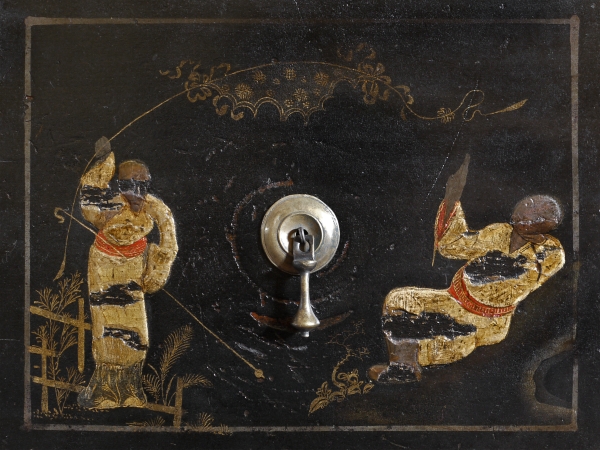
FIG. 11. Lower left drawer front of a high chest of drawers, Boston, 1710–25, showing vermilion waist bands and silver and gold borders and accents. Maple, white pine; h 61, w 40¼, d 22. Chipstone Foundation (1999.18). Photo, John R. Glembin.
The Boston japanners were consistent in their choice of imagery; we see figures, buildings, bouquets of flowers, strange-looking animals, small birds and insects, cranes both single and in pairs, boats, bridges, and the occasional chariot or sedan chair. They also adhered to certain conventions when creating their decoration. With regard to the design elements on drawer fronts, for example, they tended to place them with no concern for consistent scale, nearly always drew a metallic line around the designs, and often created a ground of metallic powders beneath decorative elements to make them seem less like they are floating in space. All these conventions are consistent with English japanning practices, suggesting that many of the Boston japanners were London-trained craftsmen or had learned their skills directly from someone who had guild training, rather than from printed resources such as Stalker and Parker’s Treatise.
Virtually nothing is known about japanners’ shop practices, but it would make sense from an economic viewpoint that an assistant might do the preparation of the ground layer, the raised ornament, and the gilding, leaving the parts of the job requiring the most skill—the execution of flat ornament and penwork—to the japanner.
One of the most interesting discoveries revealed by comparing the decoration on the known high chests is that, with the exception of one or two examples of similar imagery, no designs are identical. This fact flies in the face of the theory that japanners were using patterns or templates. We expected to find many duplicate images, particularly on pieces by the same japanner, but have identified surprisingly few. So, despite sticking to strict protocols for using certain materials and techniques for creating the decorated surface, japanners allowed themselves a certain degree of creativity and freedom when executing the designs.26
POSSIBLE DESIGN SOURCES FOR THE JAPANNER’S MOTIFS
One aspect of our research focused on creating a searchable image database of the individual motifs used by Boston japanners. This tool allowed us to make clear connections between many motifs of the japanner and those that appear on Chinese and Japanese arts of the period. As mentioned, we were never able to make an association between the japanned pieces and printed engravings in instruction manuals and travelogues. Instead, we turned our focus to Asian porcelains and lacquers available in Europe in the sixteenth century, and there we began to see some possible design sources. The relationship between motifs found on Chinese Coromandel screens and japanning is particularly strong (figs. 12, 13). On the high chest in the collection of the Chipstone Foundation, the japanner adapted the common theme of “One Hundred Antiques,” placing archaic bronzes, ewers, and censers containing scroll paintings and peacock feathers as if in a landscape.27 Variations of this theme are found on almost all Chinese screens of this type.
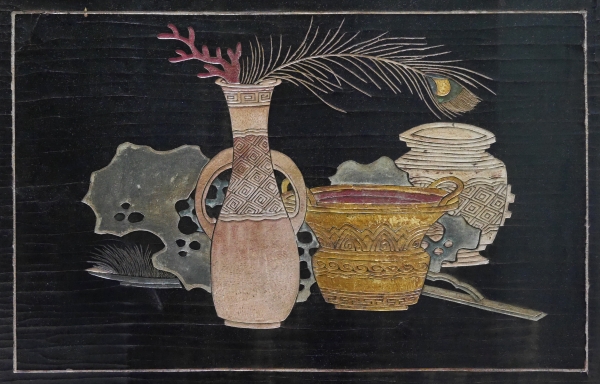
FIG. 12. Detail of the One Hundred Antiques screen, China, Kangxi period (1662–1722). Unidentified wood, lacquer; h 107½, w 222, d ¾. Private collection. Photo, Tara Cederholm.
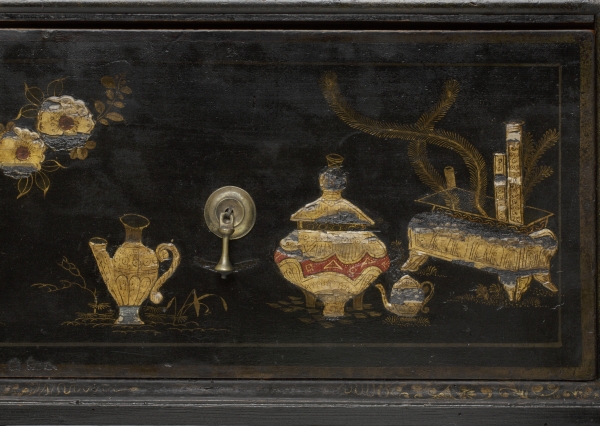
FIG. 13. Detail of the bottom drawer in the upper case of high chest of drawers. Photo, John R. Glembin. See fig. 11 for another detail of this chest.
The strong influence of these screens could possibly be explained by the guild and workshop system in London. Working within or nearby to joiners’ shops, japanners would have had access to these screens as they were refashioned into furniture or installed in architectural interiors.28 Firsthand knowledge of the screens would account for the close relationship not only in the design elements but also in the manner of execution. Figures 14 and 15 illustrate the way in which the maker of the lacquer screen and the japanner have used the same visual techniques to create the illusion of a shoreline. Each has adopted an irregular oval motif to represent the face of the land. Within that motif they have employed a series of straight vertical lines, interspersed with lines turning at a right angle and sweeping back under the previous ones. The japanner has created fine trailing lines using penwork applied to the gold ground; the lacquer worker had to carve out the recessed areas, leaving a slightly thicker raised line. The similarities in the execution details can be explained only by the japanner’s direct contact with and close examination of the screens.29 One example of this relationship is evident at the Vernon house in Newport, Rhode Island. Here, one room’s interior has been painted in imitation of a Coromandel screen applied to the wall. This interior was possibly decorated by William Gibbs between 1708 and 1729.30
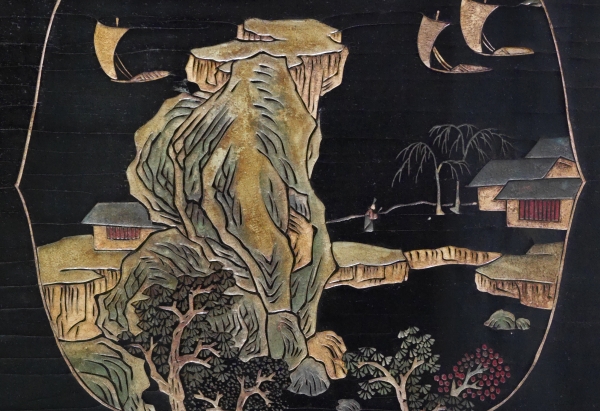
FIG. 14. A scholar in a landscape of the One Hundred Antiques screen. Photo, Tara Cederholm. See fig. 12 for another detail of this screen.
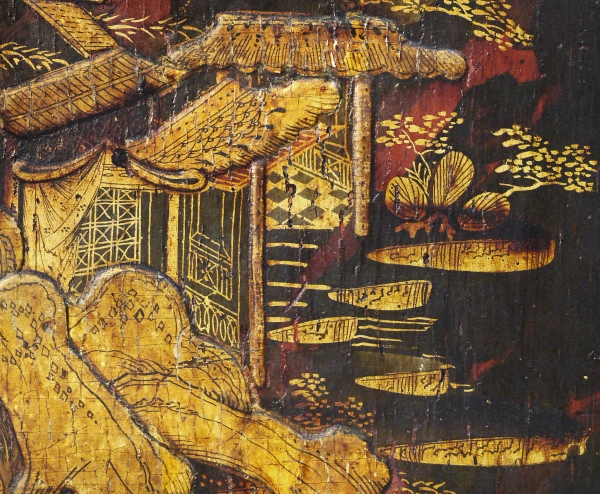
FIG. 15. The door of a tall-case clock, Peter Stelling, works by John Doane (1664–1755), Boston, 1740. Pine; h including replaced finial 101¾, w 173/16, d 9¾. Private collection. Photo, Tara Cederholm.
Chinese and Japanese ceramics present another compelling design source for the japanner. Although the motifs adorning the ceramics are copied, the painting techniques seem not to be as closely imitated, perhaps because it was less likely for the japanner to have seen a fine ceramic up close (figs. 16, 17). The japanner lifted the idea of a lion, or mythical beast, from Chinese imagery but did not reproduce the coloration or exact details. Figures, both standing and seated, are found on almost all japanned pieces and frequently appear on Asian ceramics of the period. For the domestic viewer of the Chinese and Japanese pieces, the iconography, often drawn from classical stories, is clear. These figures are scholars, deities, or ladies of the court with attendants, who are always depicted as smaller than the central figure. Reappropriated in a Western context, they become ladies and gentlemen surrounded by children (figs. 18, 19).
FIG. 16. A mythical beast on a winepot, China, Kangxi period (1662–1722). Porcelain, overglazed enamels; h 8⅝, w 8, d 1½. Private collection. Photo, Tara Cederholm.
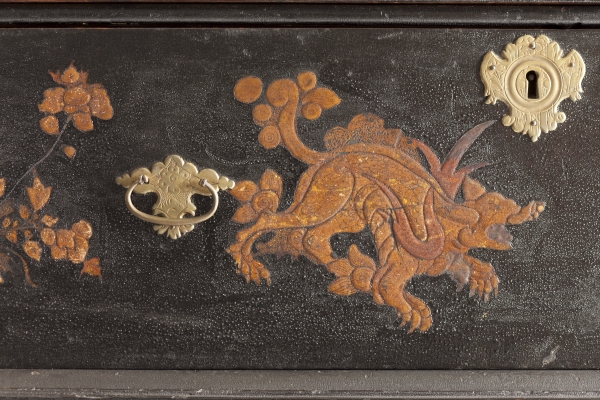
FIG. 17. A mythical beast on a high chest. See fig. 9 for another detail of this high chest.
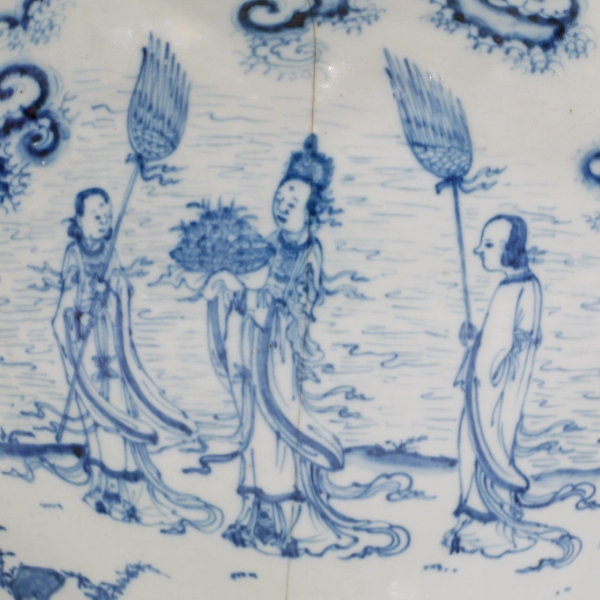
FIG. 18. Detail of a jar, China, 15th century. Porcelain; h 17, Diam 15. Private collection. Photo, Tara Cederholm.
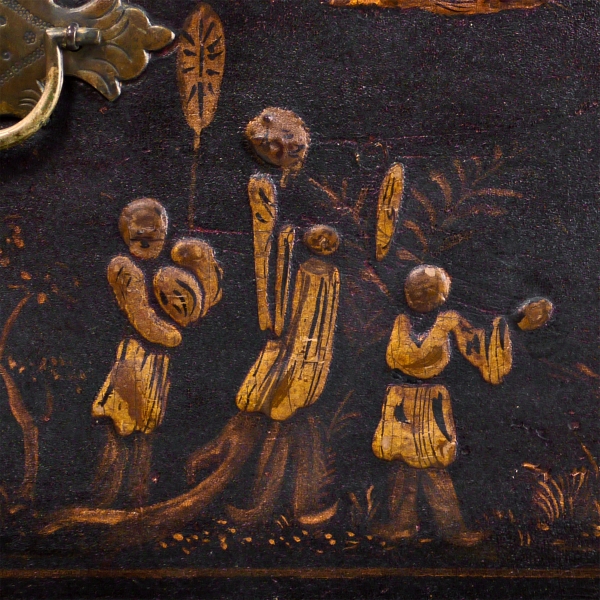
FIG. 19. Detail of a drawer front of a high chest of drawers, possibly by John Brocas (d. 1740), Boston, ca. 1730. Maple, white pine; h 69¾, w 40¾, d 22¼. The Dietrich American Foundation (8.2.1.1186). Photo, Tara Cederholm.
The many possible design sources for japanning need further investigation. As we move forward with our project, we hope to look closely at Asian materials commonly known in Europe in the seventeenth and eighteenth centuries and explore this complex relationship in greater detail.
GUILD TRAINING: LONDON INFLUENCE
Japanning flourished in England from roughly 1680 to 1740 (fig. 20). Since it was a new craft, London japanners did not have their own guild; they could have been members of almost any livery company, but the Stainers’ and Painters’ or Joiners’ Company would seem the most logical affiliation. Becoming members of the guild and possibly Citizens of London would have required serving long apprenticeships, typically of seven or eight years, and then another two years as journeymen before embarking on an independent career.31 During this training, they would have been schooled in the techniques of the craft, learning the types of decoration and motifs as well as the methods required to quickly and easily complete the work.
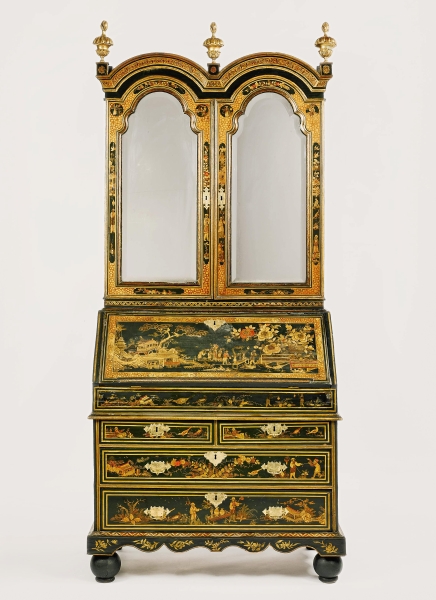
FIG. 20. Desk and bookcase, attributed to Giles Grendey (1693–1780), London, ca. 1720. Materials not recorded; h 93½, w 44¼, d 23½. From Sotheby’s, April 24, 2008, lot 18. Photo, Sotheby’s.
When examining the details on English japanned objects, the impact of these standardized techniques becomes clear. Aspects of the exotic imagery are repeated on many pieces, and the painting methods are similar: foliage is created with a few long and curving brushstrokes, the ground under birds and flowers is indicated by small dots, and water is often depicted as a series of concentric quarter-circles nested together.
The techniques and motifs used in London can also be found on Boston japanned pieces. In some cases, it is a small motif, such as a butterfly or flower, that is recognizably related; in other cases, the entire composition is nearly identical (figs. 21, 22). Although details of this scene are different, such as the handling of the fence or the surrounding foliage, the overall impression is the same. The reclining posture of the figure, supported by the fence, and his legs slightly akimbo are transposed but otherwise alike.
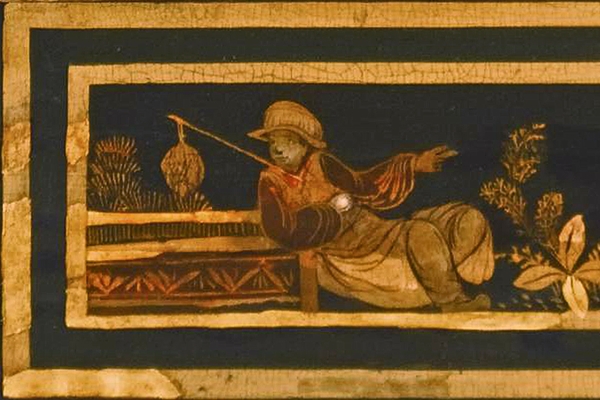
FIG. 21. A drawer front of the desk and bookcase in fig. 20.
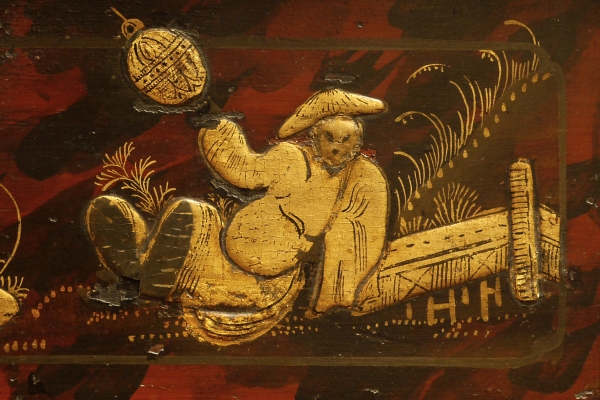
FIG. 22. Detail of a high chest of drawers, Boston, 1735–60. Soft maple, white pine; h 87, w 41½, d 23. Museum of Fine Arts, Houston, Bayou Bend Collection; Gift of Miss Ima Hogg (B.69.348). Photo, Tara Cederholm.
The undeniable link between British and Boston work, in the absence of printed design sources and documented English pieces in Boston, must be the result of London-trained japanners arriving in Boston and bringing a structured approach to the craft that had been obtained through intensive apprenticeship. Indeed, at least two of the known Boston japanners are mentioned in the records of the London Livery Company.32 Brock Jobe discovered an entry in the London Painter-Stainers’ Company Binding Records dated January 7, 1709/10, indicating that a Robert Davis of Broadway in the county of Worcester was apprenticed for seven years to a John Pinck.33 Davis’s father is listed as a “Yeoman,” suggesting that Davis may have been the second son of a landowning family. The English rules of primogeniture prevented second sons from inheriting the family lands, and therefore they were required to find a suitable profession; being apprenticed into a trade was one viable option.34 John Pinck appears to have been an important member of the Company, serving as its Master beginning in 1700. He took six other apprentices between 1681 and 1712 and apprenticed two of his own sons to fellow Company member Richard Collet.35
We recently found William Randle’s apprenticeship record in the Joiners’ Company. Randle was apprenticed on May 11, 1697, to John Child, Citizen and Joyner of London, and “turned over” to John Hooke of the Barber Surgeons’ Company. The turning over of apprentices could have been done for several reasons. It may have been that Child already had as many apprentices as were allowed by the Company. Or possibly Randle’s family had connections with Child but Randle intended to learn the new art of japanning, and so it was arranged that he be turned over to Hooke, identified in other documents as a japanner.36
BOSTON JAPANNERS AND ROBERT DAVIS
Scholars have identified more than twenty individuals associated with japanning in eighteenth-century Boston, but it is unlikely that all of them worked on furniture.37 Some may have been making and decorating small utilitarian metal objects or retailing japanned items. From the pieces that Robert Davis signed, we know that he was one of the most active and prolific japanners in Boston.
Because both William Randle and Robert Davis were trained in London in the new art of japanning, it is tempting to speculate that the two men formed connections there before setting sail for Boston. That connection seems somewhat unlikely, however, because Randle completed his apprenticeship and took his freedom of the Company on December 7, 1708, before Davis entered his apprenticeship.38 It is as yet unknown where Randle was working between late 1708 and his arrival in Boston, where he married Mary Butler in 1713.
Randle and Davis certainly worked together in Boston for a time, because both their signatures are found on the japanned high chest at the Baltimore Museum of Art and Davis married Randle’s daughter Elizabeth at King’s Chapel in Boston in 1735. Esther Stevens Brazer noted that besides japanning, Davis cut and silvered plate glass to make mirrors and decorated frames.39 He died in financial distress in 1739, with his debts exceeding his assets, suggesting that even a highly skilled japanner could not become wealthy in eighteenth-century Boston. In addition, he owed money to several prominent Boston citizens, evidence of the complicated financial relationships of the community.
THE ROBERT DAVIS STYLE
Focusing primarily on Davis, we studied the images on the two signed high chests and created a list of characteristics that we believe represent his personal style. We did not focus on listing motifs, such as Chinese buildings or figures with umbrellas, which, as discussed, are clearly drawn from a standard canon of images used by all japanners. Instead, we focused on the use of line, the angle of the brush, and other details that highlight his working habits. Although the motifs are standardized and repeated, and the methods for creating the images were taught by breaking down their component parts, we felt that the hand of the individual artist could be identified by looking closely at each brushstroke and line.
Characteristics of Signed Davis Pieces
Davis’s handling of the following seven characteristics reveals his distinctive technique, mannerisms, and style.
LEAF DETAIL
The small leaves (fig. 23) that appear scattered on the surface of almost all japanned pieces, often in groups of three or four, show a distinctive handling of the black pen work on the signed Davis examples. He placed either one or three large brushstrokes, starting at the center and moving toward the base of the leaf, and then often outlined the leaf with small thin lines.
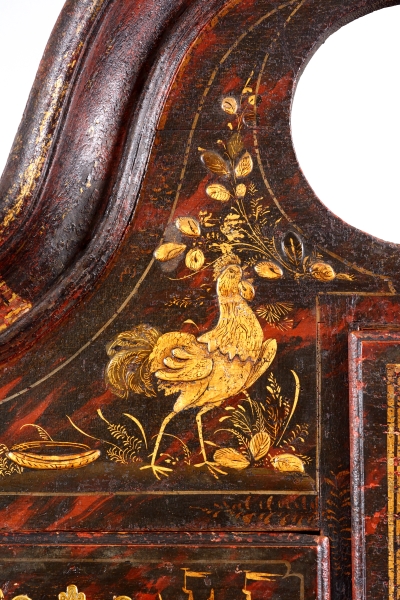
FIG. 23. The leaf detail characteristic of the high chest in fig. 1. Photo, David Stansbury.
VARYING LINE THICKNESS
Davis employed an amazing variety of thick and thin lines in his flat work (fig. 24) and used brushes in different sizes to create many calligraphic effects. His skillful handling of the brush resulted in incredibly thin, long lines mixed with brushstrokes that start thin, thicken in the middle, and continue to a point. Thick and short brushstrokes created rootlike elements located at the lower edge of a flower cluster; short teardrop-shaped brushstrokes form the foliage of the fernlike plants.
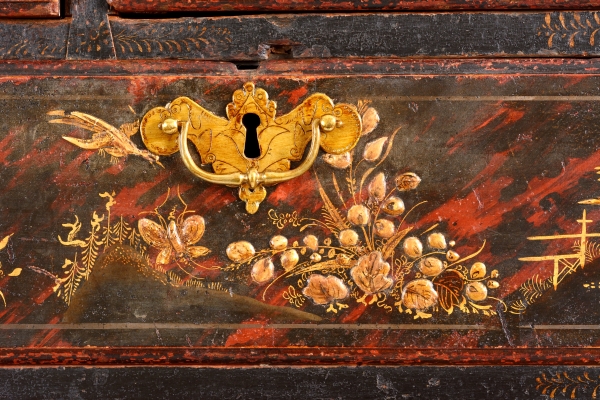
FIG. 24. The varying line thickness characteristic of the high chest in fig. 1. Photo, David Stansbury.
FLORAL BOUQUETS IN PROFUSION
Davis filled surfaces with an abundance of plant forms (fig. 25). Each bouquet overflows with different plants, and he depicted various flowers, leaves, and grasses in combination. To add to a sense of depth to the leaves, he often employed a technique of positive and negative color combinations, with one leaf in dark brown and details picked out in gold next to another in gold with details picked out in brown. The floral components expand to cover the surface, unlike other examples on which small, tight clusters of flowers are placed within a landscape.
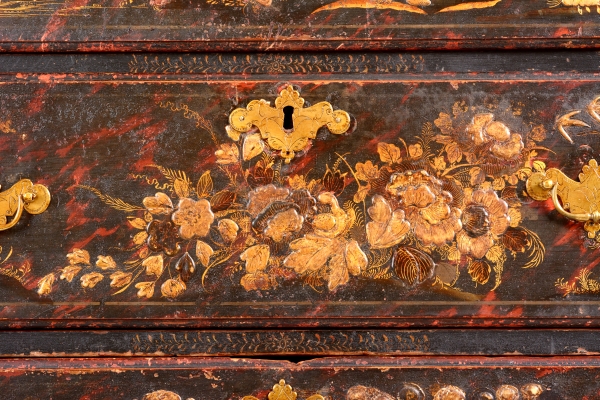
FIG. 25. The use of floral bouquets in profusion characteristic of the high chest in fig. 1. Photo, David Stansbury.
Davis often added ribbons into these bouquets. Although ribbons are a standard design element in japanned work, appearing in borders on both English and Boston work, they are inserted into floral work only on pieces that share many characteristics of Davis’s work. His distinctive tight, compact ribbon is evident here (see fig. 25, as well as fig. 29, below). He further enhanced the sense of the ribbon’s movement by varying brushstrokes from thick to thin.
RAISED RIBBED SHELLS
When the cabinetmaker did not carve the central drawer fronts, Davis applied a raised ribbed shell in its place (fig. 26).
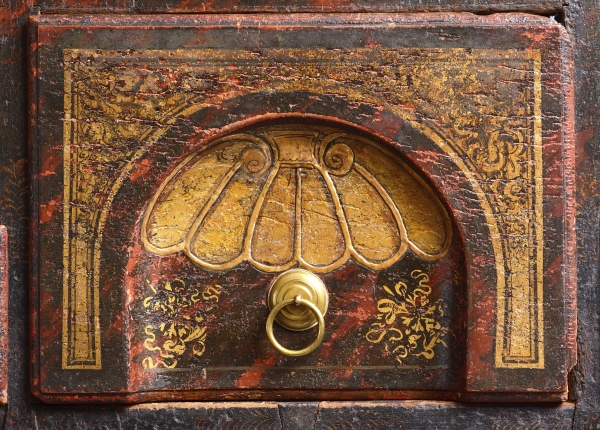
FIG. 26. The raised ribbed shells characteristic of the high chest in fig. 1. Photo, David Stansbury.
DRAWER CORNER TREATMENT
All japanners outlined drawer fronts with either one or two lines, but Davis’s outlines have a distinct style. He used only one line, set in from the drawer’s edge. He brought the two sides together with a deep sweep of the brush and a narrowing stroke, creating an indented corner (fig. 27). The confident execution differs significantly from other Boston examples.

FIG. 27. The drawer corner treatment characteristic of the high chest in fig. 1. Photo, David Stansbury.
SUN
Davis frequently included a sun peeking out from behind clouds (fig. 28). On the signed high chest (see fig. 1), this area has suffered loss to the raised ornament and is difficult to read, but the sun is located at the top center of the image, with raised circles on each side representing clouds. This motif is found on other japanners’ work, but Davis’s treatment is slightly different. He surrounded the raised sun with flat-work rays, alternating between a thick-scrolled wedge and a series of thin straight lines that extend outward. Onto the raised surface, he expertly penned a face looking downward.
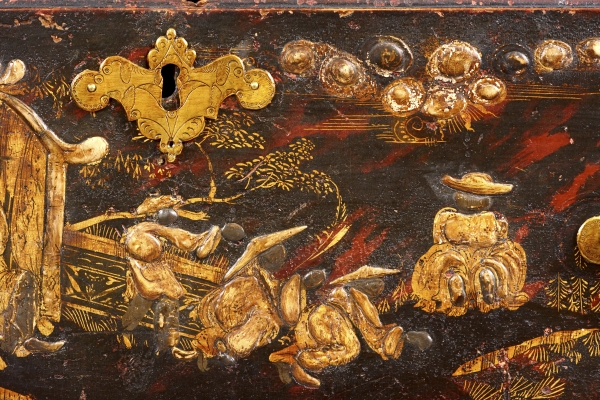
FIG. 28. The sun characteristic of the high chest in fig. 1. Photo, David Stansbury.
CHRYSANTHEMUM FLOWER
Davis employed a specific technique for flat-work chrysanthemum flowers. To create the petals, he made three short strokes starting from the outer part of the blossom and extending toward the center. The flower is found both on its own, here with ribbons surrounding it (fig. 29), and incorporated into a diaper pattern often used on cornice moldings or pediments of high chests.
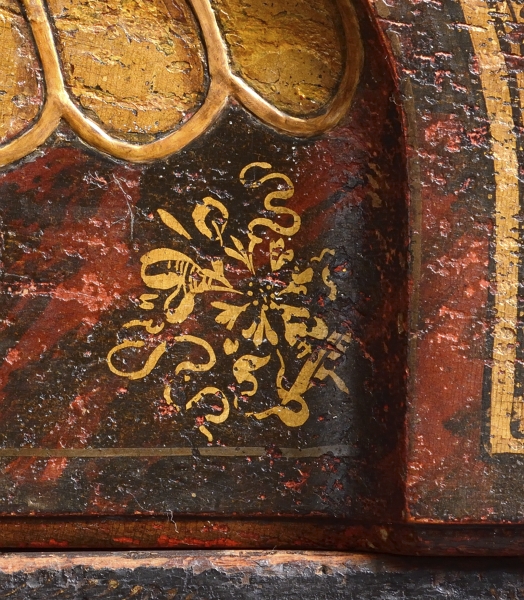
FIG. 29. The chrysanthemum flower characteristic of the high chest in fig. 1. Photo, David Stansbury.
Attributions to Robert Davis
Using the seven features as a checklist, we were able to confidently attribute five additional examples to Robert Davis, based on the remaining original decoration on unsigned pieces. This group includes four high chests of drawers: one in the collection of Colonial Williamsburg Foundation (fig. 30), the Quincy family high chest at Historic New England (fig. 31), a high chest sold at Christie’s in January 2013 and now in a private collection (fig. 32), and the so-called Pimm high chest at Winterthur Museum (fig. 33). The fifth piece that can also be included in this group is a dressing table in the Kaufman collection, based on the remaining decoration on the top (figs. 34, 35). Each piece does not necessarily display all the characteristics of Davis’s work, but they have many and share an overall design organization, allowing us to comfortably group them with the signed pieces.
FIG. 30. High chest of drawers, japanning attributed to Robert Davis, Boston, 1735–39. Maple, white pine; h 84½, w 43⅞, d 23½. Colonial Williamsburg Foundation; Museum purchase (1959–100).
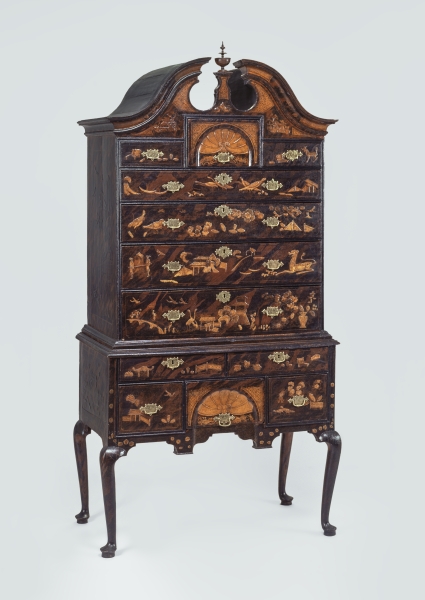
FIG. 31. High chest of drawers, japanning attributed to Robert Davis, Boston, 1730–39. Red maple, red oak, white pine; h 84⅞, w 42½, d 23¼. Historic New England; Gift of Edmund Quincy (1972.51).
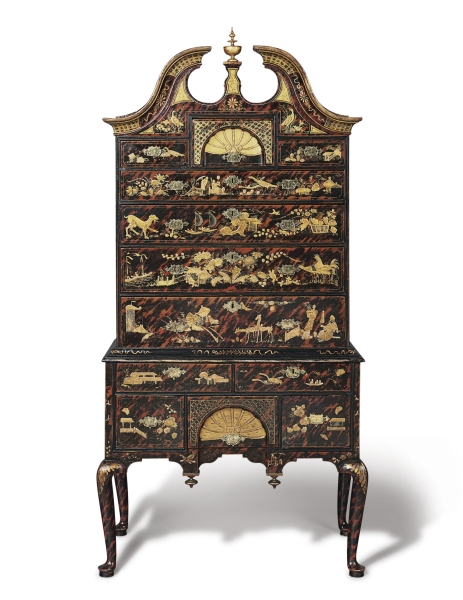
FIG. 32. High chest of drawers, japanning attributed to Robert Davis, Boston, 1730–39. Maple, white pine; h 86, w 40⅝, d 23. Kaufman Americana Foundation, George M. (deceased) and Linda H. Kaufman. Photo, Christie’s. The legs have been replaced.
FIG. 33. High chest of drawers, John Pimm (1716–1773), japanning attributed to Robert Davis, Boston, 1730–39. Soft maple, black walnut, white pine, mahogany; h 85¼, w 42, d 25¼. Winterthur Museum; Gift of Henry Francis du Pont (1957.1084).
FIG. 34. Dressing table, japanning attributed to Robert Davis, Boston, 1720–35. Maple, white pine; h 30½, w 34, d 21¼. Private collection. National Gallery of Art, Washington, D.C.; Promised gift of George M. and Linda H. Kaufman.
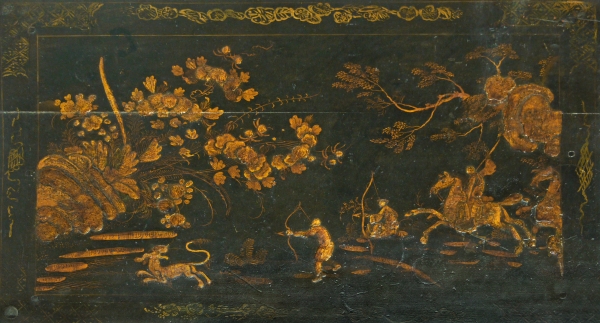
FIG. 35. Top of the dressing table in fig. 34. Photo, Tara Cederholm.
We carefully reviewed the pieces in the database to ensure that these particular characteristics were not found on other examples (and thus could be considered a universal trait), but truly did represent the hand of Robert Davis. We focused on the execution of the details of the motifs, not the mere presence of them.
LEAF DETAIL
Figures 36–38 show the treatment of the raised leaf with the broad central stroke on three related high chests. In many cases, the raised ornament has been lost and was replaced in later conservation campaigns, making it among the more difficult features to identify.
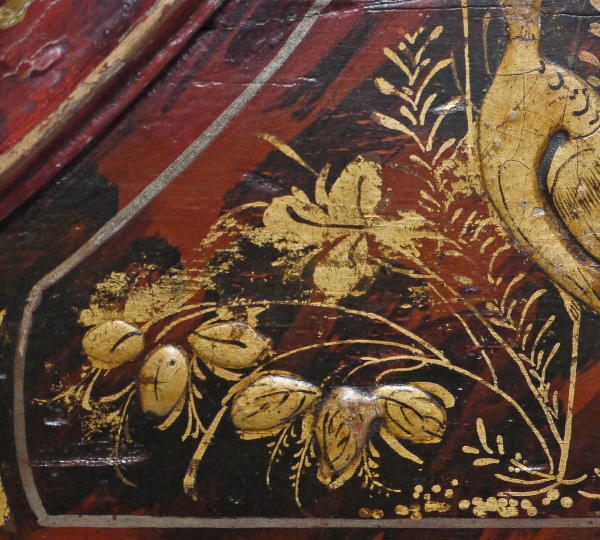
FIG. 36. The leaf detail characteristic of the high chest in fig. 32. Photo, Tara Cederholm.
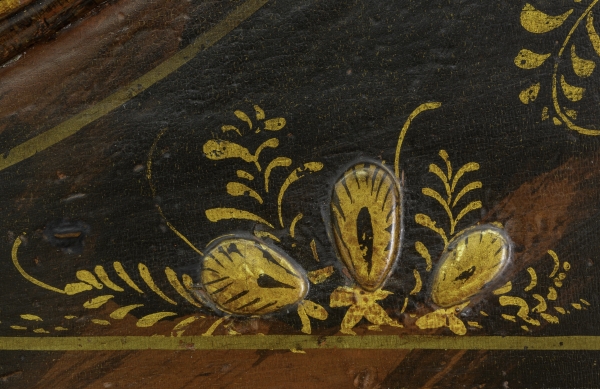
FIG. 37. The leaf detail characteristic of the high chest in fig. 33.
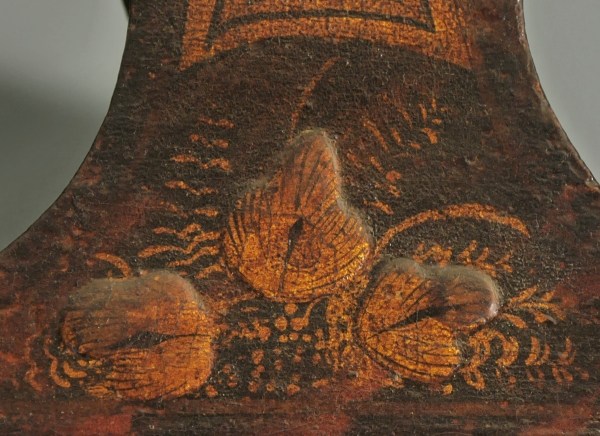
FIG. 38. The leaf detail characteristic of the high chest in fig. 31. Photo, K. C. Cederholm.
USE OF VARYING LINES AND FLORAL BOUQUETS IN PROFUSION
Four other pieces display both the highly diverse floral arrangements and varying line thickness characteristic of Davis. Unfortunately, several of these pieces are in poor condition, making it difficult to fully read the flat work. Nevertheless, we feel that it is possible to discern similarities in technique (fig. 39–42).40 The high chests at Winterthur Museum and Colonial Williamsburg most effectively display the varying line thickness in the better-preserved flat work.
FIG. 39. The varying line thickness and use of floral bouquets in profusion characteristics of the dressing table in fig. 34. Photo, Tara Cederholm.
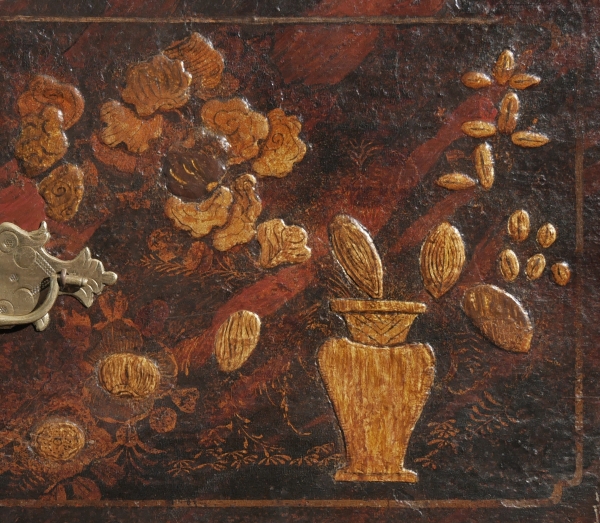
FIG. 40. The varying line thickness and use of floral bouquets in profusion characteristics of the high chest in fig. 31. Photo, K. C. Cederholm.
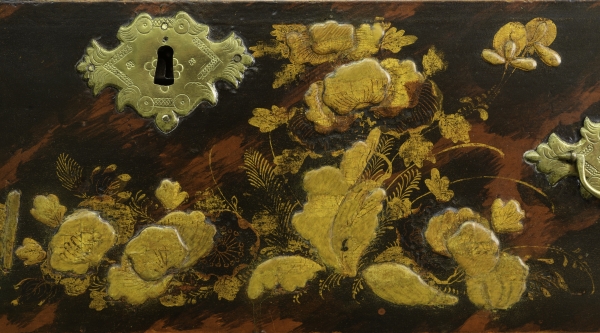
FIG. 41. The varying line thickness and use of floral bouquets in profusion characteristics of the high chest in fig. 33.
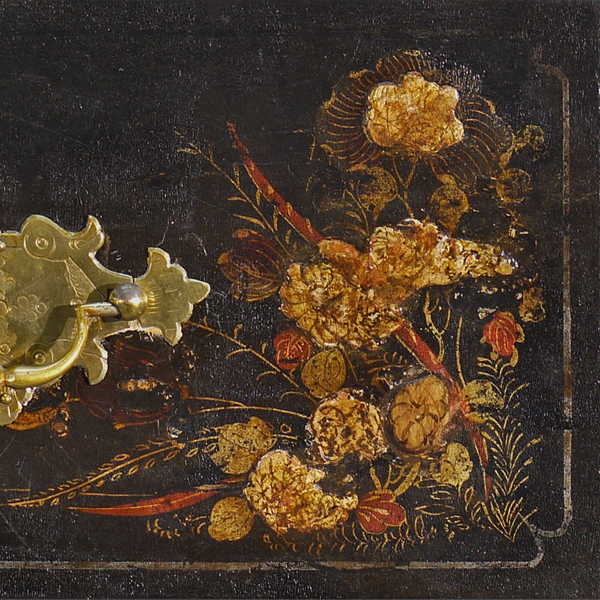
FIG. 42. The varying line thickness and use of floral bouquets in profusion characteristics of the high chest in fig. 30. Photo, K. C. Cederholm.
RAISED RIBBED SHELLS
The treatment of the japanned shells on three of the pieces is remarkably similar (fig. 43–45). The Winterthur high chest has a much more elaborate shell-and-swag motif probably carved by a specialist that has only been gilded by the japanner.
FIG. 43. The raised ribbed shells characteristic of the high chest in fig. 32. Photo, Tara Cederholm.
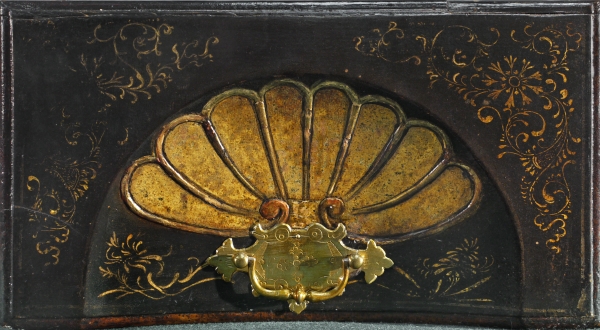
FIG. 44. The raised ribbed shells characteristic of the high chest in fig. 30. Photo, K. C. Cederholm.
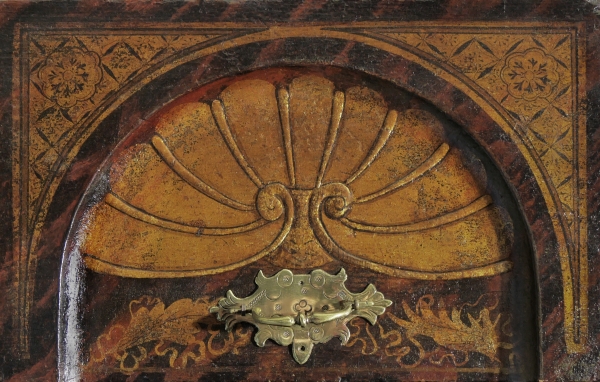
FIG. 45. The raised ribbed shells characteristic of the high chest in fig. 31. Photo, K. C. Cederholm.
DRAWER CORNER TREATMENT
Four of the pieces have the exaggerated indented corner treatment on the outlining of the drawers (fig. 46–49).
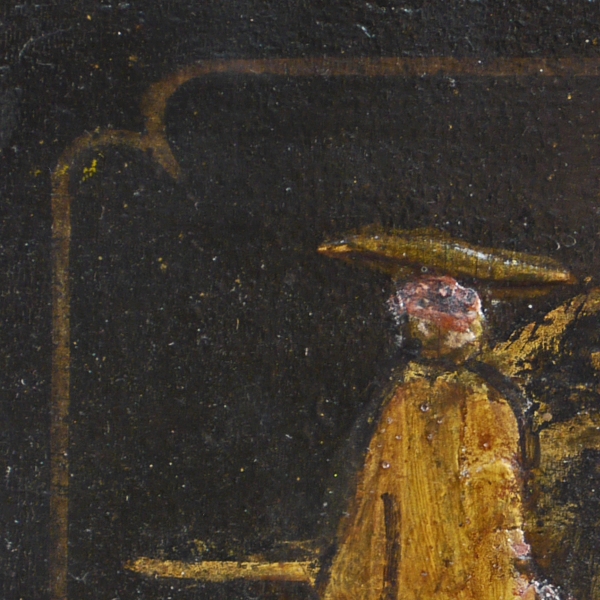
FIG. 46. The drawer corner treatment characteristic of the high chest in fig. 30. Photo, K. C. Cederholm.
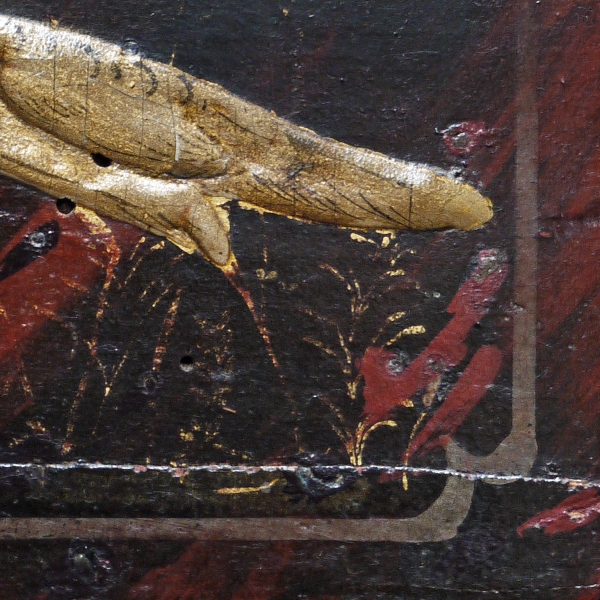
FIG. 47. The drawer corner treatment characteristic of the high chest in fig. 32. Photo, Tara Cederholm.
FIG. 48. The drawer corner treatment characteristic of the high chest in fig. 33.
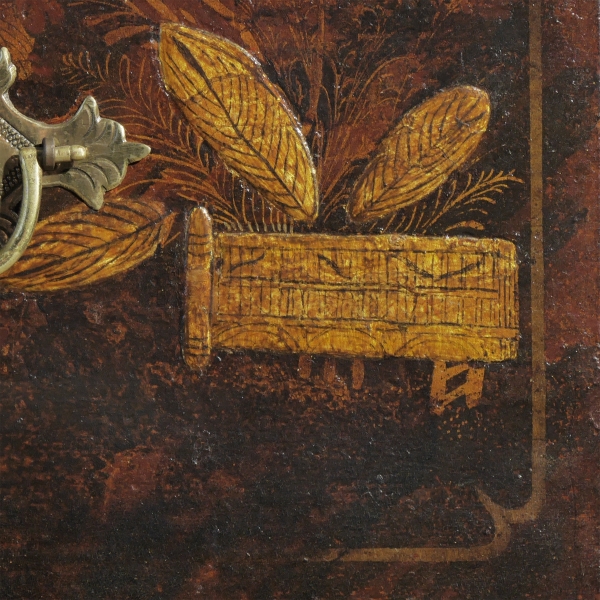
FIG. 49. The drawer corner treatment characteristic of the high chest in fig. 31. Photo, K. C. Cederholm.
SUN
Two of the high chests have a similar sun decoration surrounded by clouds (figs. 50, 51). On one high chest, a similar face has been applied with pen work on the center of the shell (fig. 52).
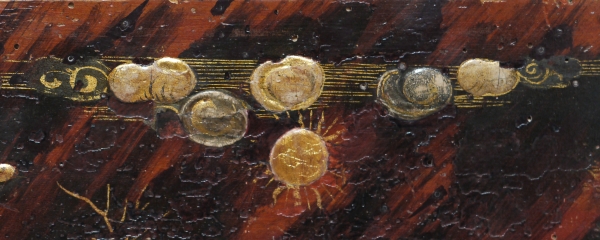
FIG. 50. The sun characteristic of the high chest in fig. 32. Photo, Tara Cederholm.
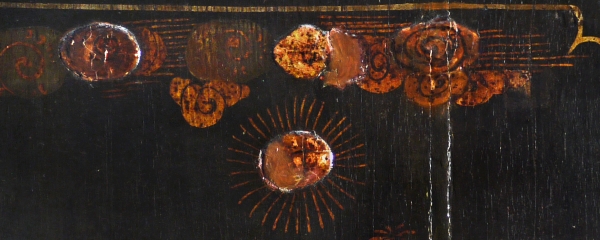
FIG. 51. The sun characteristic of the high chest in fig. 30. Photo, K. C. Cederholm.
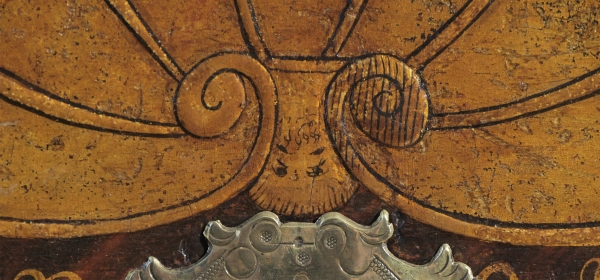
FIG. 52. Here, a face, related to the sun characteristic, has been applied with pen work on the center of the shell on the high chest in fig. 31. Photo, K. C. Cederholm.
CHRYSANTHEMUM FLOWER
Davis’s characteristic flat-work chrysanthemum flower, either incorporated into the diaper pattern or alone, appears on four pieces in the group (fig. 53–56).
FIG. 53. The chrysanthemum flower characteristic of the high chest in fig. 32. Photo, Tara Cederholm.
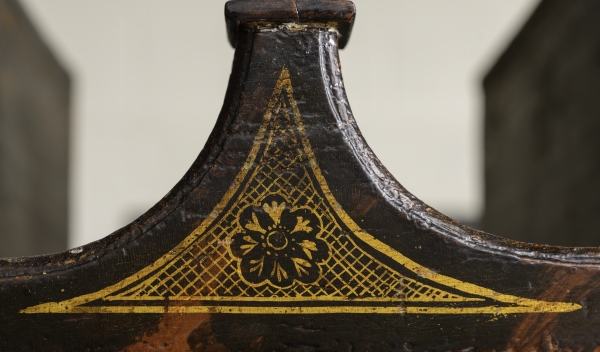
FIG. 54. The chrysanthemum flower characteristic of the high chest in fig. 33.
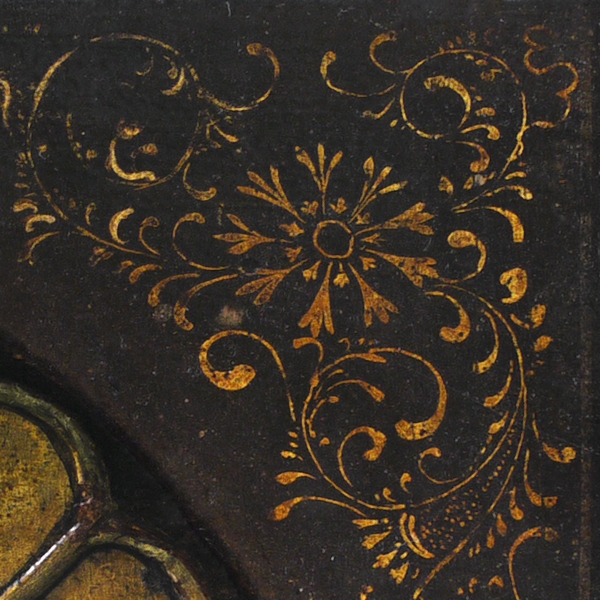
FIG. 55. The chrysanthemum flower characteristic of the high chest in fig. 30. Photo, K. C. Cederholm.
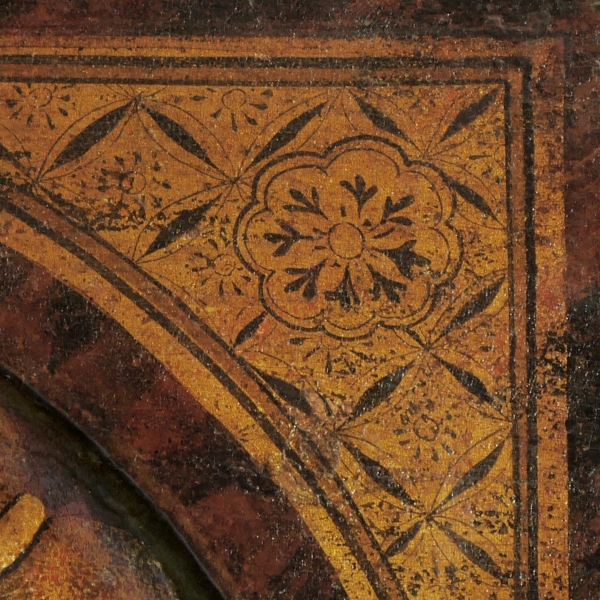
FIG. 56. The chrysanthemum flower characteristic of the high chest in fig. 31. Photo, K. C. Cederholm.
With the addition of these five pieces, we were able to more than double the number of objects recognized as the work of Robert Davis. Our more recent examination of the bureau table (see appendix) has led to the conclusion that, contrary to our original judgment, it is his work as well, bringing the total of objects now attributed to Davis to nine.41 Testimony to his importance in Boston, Davis’s work represents about 16 percent of the surviving American japanned objects.
We were able to make a few additional connections between individual motifs but have not yet successfully assembled another clear group that represents the work of one japanner or shop.42 Other scholars have noted connections between the flat-top high chest at the Metropolitan Museum of Art and the one in the collection of the Chipstone Foundation.43 Many compelling similarities exist between these two pieces, and more intensive study of the details, as was undertaken here with the work of Robert Davis, may confirm that they are indeed by the same hand.
We hope to continue the work of careful image and technique comparison to bring to light more similarities and differences, perhaps allowing us to group pieces by specific decorators. A thorough understanding of Boston japanning can be achieved only by acquiring a deeper knowledge of japanning as it was practiced in London and Europe as well.
APPENDIX: BOSTON JAPANNED FURNITURE
This checklist provides information on fifty-three examples of American japanned case furniture dating from the first half of the eighteenth century, as identified by the authors. The several forms represented include flat-top high chests, with either turned bases or cabriole legs, and pedimented or bonnet-top high chests, all of which have cabriole legs; dressing tables, one with a turned base and the rest with cabriole legs; one bureau table; one tea table; and several clock cases. Mirrors have been omitted because much of the evidence points to their manufacture in England and importation to America.
The color of the japanned ground on each example, when known, has been noted. About half the grounds are black; the others are red with black streaks, in imitation of tortoiseshell lacquer. One exception is a clock with a light blue ground that is in a private collection.
Accession numbers are given for examples in public collections; more information about them can be obtained through various published catalogues and online databases. For objects in private collections or whose location is unknown, a reference to an auction catalogue or publication has been provided when available. The authors hope to add to this list as research brings to light more examples of japanned furniture.
| Object Type | Collection, Location (Accession Number) | Ground Color | Notes |
|---|---|---|---|
|
High chest; flat top, turned base |
Adams National Historic Site, Quincy, Mass. (ADAM 1) |
Black |
Signed “Randle,” for William Randle |
|
High chest; flat top, turned base |
Chipstone Foundation, Milwaukee, Wis. (CF1999.18) |
Black |
On loan to the Milwaukee Art Museum, Milwaukee, Wis.; see details, figs. 11, 13 |
|
High chest; flat top, turned base |
Chipstone Foundation (CF1996.1) |
Black |
Decoration atypical of eighteenth-century Boston work |
|
High chest; flat top, turned base |
Historic Deerfield, Deerfield, Mass. (56.152) |
Black |
Background and decoration restored |
|
High chest; flat top, turned base |
Historic New England, Boston (1971.72) |
Appears black |
Possibly original red/black “tortoiseshell” ground; carved raised ornament Located at Winslow-Crocker House, Yarmouthport, Mass.; see details, figs. 9, 17 |
|
House of Seven Gables, Salem, Mass. (93.2.9) |
Now black |
Background and decoration restored; possible original red/black “tortoiseshell” ground |
|
|
High chest; flat top, turned base |
Milwaukee Art Museum, Milwaukee, Wis. (M2000.202) |
Black |
|
|
High chest; flat top, turned base |
Metropolitan Museum of Art, N.Y. (40.37.3) |
Black |
|
|
High chest; flat top, turned base |
Virginia Museum of Fine Arts, Richmond (91.8a-b) |
Black |
Unusual faceted legs, carved raised ornament |
|
High chest; flat top, turned base |
Winterthur Museum (1958.0572) |
Black |
|
|
High chest; flat top, turned base |
Private collection |
Black |
See Gerald W. R. Ward, The Cabinetmaker and the Carver: Boston Furniture from Private Collections (Boston: Massachusetts Historical Society, 2013), cat. no. 7 |
|
High chest; flat top, turned base |
Private collection |
Red/black |
See Northeast Auctions, Aug. 2–3, 1997, lot 170 |
|
High chest; flat top, turned base |
Private collection |
Red/black |
Unpublished |
|
High chest; flat top, turned base |
Unknown |
Unknown |
See Northeast Auctions, Aug. 6, 2000, lot 822 |
|
High chest, flat top, turned base |
Unknown |
Black |
Has replaced cabriole legs and decoration restored See Christie’s, Mar. 21, 2015, lot 1280 |
|
High chest; flat top, cabriole legs |
Baltimore Museum of Art, Baltimore, Md. (1970.37.4) |
Black |
Signed by Robert Davis and inscribed “WR,” presumably for William Randle See fig. 3 |
|
High chest; flat top, cabriole legs |
Dietrich American Foundation, Philadelphia, Pa. (8.2.1.1186) |
Black |
On loan to the Philadelphia Museum of Art See fig. 19 |
|
High chest; flat top, cabriole legs |
Metropolitan Museum of Art (10.125.58) |
Red/black |
En suite with a dressing table at the Metropolitan Museum of Art (10.125.68) |
|
High chest; flat top, cabriole legs |
Museum of Fine Arts, Boston (32.227) |
Red/black |
Decoration restored |
|
High chest; flat top, cabriole legs |
Shelburne Museum, Shelburne, Vt. (3.1–11) |
Black |
|
|
High chest; flat top, cabriole legs |
Winterthur Museum, (1952.0255) |
Red/black |
|
|
High chest; flat top, cabriole legs |
Private collection |
Black |
See Butterfield and Butterfield, Nov. 4–5, 1997, lot 5667 |
|
High chest; flat top, cabriole legs |
Private collection |
Black |
See John Walton, Inc., advertisement, Antiques 115, no. 5 (May 1979): 830 |
|
High chest; flat top, cabriole legs |
Private collection |
Black |
Unpublished |
|
High chest; flat top, cabriole legs |
Unknown location |
Black (?) |
Known only from a photograph in Richard H. Randall Jr., “William Randall, Boston Japanner,” Antiques 105, no. 5 (May 1974): 1130, fig. 3 |
|
Colonial Williamsburg Foundation, Williamsburg, Va. (1959–100) |
Black |
Japanning attributed by the authors to Robert Davis |
|
|
High chest; bonnet top |
Historic New England (1972.51) |
Red/black |
Located at Quincy House, Quincy Mass.; japanning attributed by the authors to Robert Davis |
|
High chest; bonnet top |
Bayou Bend, Houston Museum of Fine Arts, Houston, Tex. (B.69.348) |
Red/black |
See detail, fig. 22 |
|
High chest; bonnet top |
Metropolitan Museum of Art (40.37.1) |
Red/black |
En suite with a dressing table at the Metropolitan Museum of Art (40.37.2) |
|
High chest; bonnet top |
Museum of Fine Arts, Boston (1976.653) |
Red/black |
Legs missing |
|
High chest; bonnet top |
Winterthur Museum (1957.1084) |
Red/black |
“Pimm” example; japanning attributed by the authors to Robert Davis |
|
High chest; bonnet top |
Private collection |
Red/black |
Signed “Robert Davis” |
|
High chest; bonnet top |
Private collection |
Red/black |
Japanning attributed to Robert Davis See Christie’s, Jan. 25, 2013, lot 159; see figs. 10, 32, 36, 43, 47, 50, 53 |
|
High chest; bonnet top |
Private collection |
Red/black |
Most of the japanning is lost; see Christie’s, Jan. 18–19, 2001, lot 54 |
|
Bureau table |
Wunsch Collection |
Red/black |
Japanning attributed by the authors to Robert Davis; see Christie’s, Sept. 24, 2012, lot 20 |
|
Dressing table; turned base |
Private collection |
Red/black |
Promised gift to the National Gallery of Art, Washington, D.C., from George M. and Linda H. Kaufman; japanning attributed by the authors to Robert Davis; see figs. 34, 35, 39 |
|
Dressing table; cabriole legs |
Metropolitan Museum of Art (10.125.68) |
Red/black |
En suite with the flat-top high chest at the Metropolitan Museum of Art (10.125.58) |
|
Dressing table; cabriole legs |
Metropolitan Museum of Art (40.37.2) |
Red/black |
En suite with the bonnet-top high chest at the Metropolitan Museum of Art (40.37.1) |
|
Dressing table. cabriole legs |
Private collection |
Black |
See Christie’s, Jan. 19–20, 2012, lot 116 |
|
Dressing table; cabriole legs |
Unknown location |
Unknown |
Signed “W Randle”; all japanning has been removed; see Skinner, Sept. 24, 1983, lot 189 |
|
Table; slate top with turned base |
Wadsworth Atheneum Museum of Art, Hartford, Conn. (1926.505) |
Black |
Japanning is fragmentary, visible only on base |
|
Clock case |
Henry Ford Museum and Greenfield Village, Dearborn, Mich. (62.148.1) |
Red/black |
Movement by Gawen Brown |
|
Harvard University (HUCL.3) |
Unknown |
Movement by Benjamin Bagnall; inside the door is a label by the japanner Thomas Johnston; all japanning has been removed from the surface |
|
|
Clock case |
Metropolitan Museum of Art (1985.341) |
Red/black |
Movement by Joseph Ward |
|
Clock case |
Redwood Library, Newport, R.I. (RLC.DEC.002) |
Red/black |
Movement by William Claggett |
|
Clock case |
Rhode Island Historical Society, Providence (1980.11.1) |
Black |
Movement by William Claggett, signed by Robert Davis; also signed by S. J. Bower and W. E Bower, who overpainted all of Davis’s work |
|
Clock case |
Winterthur Museum (1955.0096.003) |
Red/black |
Movement by Gawen Brown; see fig. 11 |
|
Clock case |
Private collection |
Red/black |
Movement by John Doane See Sotheby’s, June 26, 1991, lot 354; see detail, fig. 15 |
|
Clock case |
Private collection |
Blue |
Movement by William Claggett See Alyce L. Perry, “The Best Blew”: A Rare American Blue-Japanned Tall-Case Clock,” Antiques 175, no. 5 (May 2009): 125–27 |
|
Clock case |
Private collection |
Red/black |
Movement by Gawen Brown See Sotheby’s, Jan. 21, 2011, lot 269 |
|
Clock case |
Private collection |
Red/black |
Movement by Moses Peck, ca. 1750–65 See Skinner, Oct. 30–31, 1993, lot 207A |
|
Clock case |
Private collection |
Unknown |
Movement by Gawen Brown See Kaminski Auctions, April 19, 1999 |
|
Clock case |
Private collection |
Black |
Movement by Gawen Brown See Pook and Pook, Jan. 15–16, 2010, lot 897 |
* * *
The authors wish to thank Michael B. Melanson and Laurie Lindey for their skillful assistance with genealogical research and expert guidance at the Guild Hall Library. K. C. Cederholm edited and transformed hundreds of photos of the japanned decoration on each of the pieces examined for inclusion in the image database. We also wish to thank the owners of many japanned pieces that we examined for this study who granted us access for examination and photography.

1. The signed Davis pieces, in addition to two high chests (figs. 1, 3), include a tall case clock at the Rhode Island Historical Society. That clock also bears the signatures of two nineteenth-century japanners: “S.J. Bower / Japaner & Gilder/Providence R.I. / Sept 25th 1857” and “W.E. Bower / Japaner and Gilder / Providence R.I. / Feby 14th 1884.” None of its original decoration is visible, and therefore it was excluded from our study. William Randle initialed the same high chest at the Baltimore Museum of Art (fig. 3) and also signed a high chest now at the Adams National Historical Site. Thomas Johnston labeled a tall case clock in the Harvard University Clock Collection. Unfortunately, that clock lacks a japanned surface, but it is constructed of pine and bears evidence of vermillion pigment on the back and interior, suggesting it was originally japanned.
2. The application chosen for the database is Google’s Picasa. Images can be searched using keywords tagged to each image.
3. Our image database includes fifty-three japanned pieces made in eighteenth-century Boston (see appendix). Some lack the original japanning or are currently unlocated. We examined thirty-nine pieces in person and included detail images of those in the database.
4. Mirrors were omitted from this study because the frames were often imported from England. They deserve a separate inquiry.
5. A photocopy of the probate inventory of Isaac Royall Sr. is on display at the Royall House, Medford, Mass. A copy is also available on the Royall House website: www.royallhouse.org.
6. Esther Stevens Brazer, “The Early Boston Japanners,” Antiques 105, no. 5 (May 1943): 208–11; and “Inventory of Robert Davis, Japanner,” recorded Sept. 18, 1739, 34:456, Suffolk County Probate Records, Boston (microfilm copy, Winterthur Library).
7. Brazer, “Early Boston Japanners,” 208.
8. Yvonne Jones describes the development of the japanning of tinware in Japanned Papier Mâché and Tinware, c. 1740–1940 (Woodbridge, Suffolk, Eng.: Antique Collectors’ Club, 2012), 14.
9. Cynthia Viallé, “Two Boxes and Two Balustrades: Private Orders for Fine Japanese Export Lacquer,” in East Asian Lacquer: Material Culture, Science and Conservation, ed. Shayne Rivers, Rupert Faulkner, and Boris Pretzel (London: Archetype Publications, 2011), 26–30.
10. For a full discussion of the cabinet, see Adam Bowett, English Furniture 1660–1714, From Charles II to Queen Anne (Woodbridge, Suffolk, Eng.: Antique Collectors’ Club, 2002), 38.
11. Stalker and Parker refer to this work as “Bantam work”; John Stalker and George Parker, A Treatise of Japanning and Varnishing, 1688 (1688; reprint, London: Alec Tiranti, 1960), 36.
12. Ibid., 37–38.
13. Monika Kopplin, European Lacquer: Selected Works from the Museum für Lackkunst, Münster ([Munich]: Hirmer Verlag, 2010), 319.
14. Two japanned examples with imagery taken directly from Stalker and Parker’s Treatise were identified by Monika Kopplin and are described in European Lacquer, 324–25. One is an English cabinet on stand with gilt designs on a black ground; the other is a cabinet from Brunswick, Germany, with designs executed in polychrome on a black ground.
15. Salmon gives a recipe for a varnish to protect outdoor wood that includes linseed oil, rosin, and umber pigment. He says that “’tis an excellent Vernish to preserve Timber or Wooden work, lies like the China Vernish, and will endure ten times as long as any Painting, if well done.” The quotation is from an unpaginated addenda to the 1685 edition, which is available online at: https://books.google.com/books?id=h_sC9X95PT0C&printsec=frontcover&dq=william+salmon&hl=en&sa=X&ei=-WF0VYG9KMiGsAXgsIDoCg&ved=0CCwQ6AEwAQ#v=onepage&q=china&f=false.
16. The book was translated into English by Flavia Perugini as Techniques of Chinese Lacquer: The Classic Eighteenth-Century Treatise on Asian Varnish (Los Angeles: J. Paul Getty Museum, 2009).
17. For a discussion of Nieuhof, see Ethan Lasser, “Reading Japanned Furniture,” in American Furniture 2007, ed. Luke Beckerdite (Milwaukee, Wis.: Chipstone Foundation, 2007), 169–90. See also Robert Leath, “Jean Berger’s Design Book: Huguenot Tradesmen and the Dissemination of French Baroque Style,” in American Furniture 1994, ed. Luke Beckerdite (Milwaukee, Wis.: Chipstone Foundation, 1994), 136–60.
18. Stalker and Parker, in the Treatise, recommend using seedlac in spirits of wine (alcohol) to make the varnish (see pp. 8, 19). According to them, all other resins, including shellac, will not give good enough results.
19. A scientific analysis of the materials making up the decorative surface undertaken by Jennifer Mass at Winterthur Museum in 2009 found the blue pigment to be ground cobalt blue glass, known as smalt. Directions for making a blue (“blew”) japanned surface can be found in Stalker and Parker’s Treatise, using smalt as the pigment suspended in a binder of isinglass (see p. 23). For more on this object, see Alyce L. Perry, “The Best ‘Blew’: A Rare American Blue-Japanned Tall-Case Clock,” Antiques 175, no. 5 (May 2009): 125–27.
20. Richard L. Champlin, “High Time: William Claggett and His Clockmaking Family,” Newport History: Bulletin of the Newport Historical Society 47, part 3, no. 155 (summer 1974): 157–85. In addition to the pale blue tall clock, Champlin refers to at least three other clocks with japanned cases by William Claggett. Two are wall clocks—one is in the Seventh Day Baptist Church in the Newport Historical Society, the other is in a private collection. A Claggett japanned tall clock currently resides in the Redwood Library, Newport. A deeper study of these objects as a group may one day prove the existence of a Newport japanner.
21. For a full discussion of this piece, see Morrison H. Heckscher, American Furniture in the Metropolitan Museum of Art, vol. 2, Late Colonial Period: The Queen Anne and Chippendale Styles (New York: Metropolitan Museum of Art, 1985), cat. no. 157.
22. Edward Gyles, a Boston painter, died in 1785, leaving behind “16 [one pound] Baggs of Vermillion”; see Abbott Lowell Cummings and Richard Candee, “Colonial and Federal America: Accounts of Early Painting Practices,” in Paint in America: The Colors of Historic Buildings, ed. Roger Moss (Washington, D.C.: National Trust for Historic Preservation, 1994), 22–23.
23. Vermilion pigment has similarities to red ochre and red lead, and it is not unusual to find these in combination. Robert Dossie, in his Handmaid to the Arts (1764), warns against the adulteration of vermilion with red lead, which will cause the color to darken over time. Hence, English vermilion had a bad reputation because of the widespread addition of adulterants, and artists preferred vermilion from China. For more on the history of vermilion, see R. D. Harley, Artists’ Pigments, c. 1600 to 1835: A Study of English Documentary Sources, 2d rev. ed. (London: Archetype Publications, 1982).
24. A variety of metallic powders have been identified on Boston japanning, including tin, silver, copper, and brass. They were used to enhance the designs with a variety of colors, but because they tarnish, their original appearance has been altered and the colors are no longer clearly discernible. For more on the topic, see Johanna Bernstein, “An Investigation of the Metallic Decoration in Eighteenth-Century American Japanning,” in Postprints (Buffalo: Wooden Artifacts Group of the American Institute for Conservation of Historic and Artistic Works [AIC], 1992).
25. Examples of the use of vermilion to enhance details in the japanned decoration can be seen on a tall clock in a private collection; see Frank L. Hohmann III, Timeless: Masterpiece American Brass Dial Clocks (New York, Hohmann Holdings LLC, 2009), 150–51, and on the high chest owned by the Chipstone Foundation, currently on view at the Milwaukee Art Museum.
26. Unlike the imagery on the high chests, two japanned clock cases with movements by Gawen Brown exhibit nearly identical decoration on the waist doors. The japanner Thomas Johnston shared a workspace in Boston with Brown, so it is tempting to make attribution to Johnston, but further investigation is needed to confirm that the japanning is in fact his work. Gawen Brown arrived in Boston in 1748 and advertised in The Boston-Evening Post on January 16, 1749, “That Gawen Brown, Clock and Watch Maker lately from London, keeps his Shop at Mr. Johnson’s, Japanner, in Brattle-Street, Boston, near Mr. Cooper’s Meeting House, where he makes and sells all sorts of plain, repeating and astronomical Clocks, with Cases, plain, black Walnut, Mahogony or Japann’d”; see Dean A. Fales, Jr., “Boston Japanned Furniture,” in Boston Furniture of the Eighteenth Century: A Conference Held by the Colonial Society of Massachusetts, 11 and 12 May 1972, ed. Walter Muir Whitehill, Jonathan L. Fairbanks, and Brock Jobe, Publications of the Colonial Society of Massachusetts, vol. 48 (Boston: Colonial Society of Massachusetts, 1974),51–54.
27. An alternative theory of this decoration as a narrative has been suggested by Lasser, “Reading Japanned Furniture,” 169–90. He suggests that the objects depicted on this high chest are goods for sale and can be read as the commercial possibilities of trade with Asia. A more direct link to imagery on Chinese screens can account for this choice of decoration. The figures that Lasser suggests as selling wares are in fact the common Chinese theme of scholars admiring antiques, often depicted in garden settings and paired with the “One Hundred Antiques” theme. The decoration on the high chests is an appropriation of images imported from China. In China, the images formed a distinct and clear narrative familiar to anyone with a classical education, but as they were lifted whole or in part and applied to the japanned surface, they lost their original content and meaning. The japanner tells the story of exoticism in an extravagant manner, and the high chest would have projected to period viewers the owner’s wealth and worldliness.
28. Bowett, English Furniture, 31.
29. As our image database grows, we expect to uncover many more links between the techniques of the japanner and the Coromandel screens.
30. For a fuller discussion of this interior, see Caroline Frank, Objectifying China, Imagining America: Chinese Commodities in Early America (Chicago: University of Chicago Press, 2011), 59–95.
31. Bowett, English Furniture, 31.
32. We are still searching the records for additional japanners, a process made tedious by the unindexed records of the Joiners’ Company.
33. Brock Jobe and Elizabeth Rhodes, “Recent Discoveries in Boston Japanned Furniture,” Antiques 105, no. 5 (May 1974): 1083; and MS5669/1, fl. 108a, Guildhall Library, London. Two other Robert Davis apprenticeship records have been located in the Joiners’ Company records but were eliminated as options for the Boston japanner because of the apprenticeship date and Davis’s known death in Boston in 1739; see MS 8052/4, fl. 57a, and MS 8051/2, fl. 82b, Guildhall Library, London.
34. For a fuller discussion of apprentices from the gentry/yeoman class during this period, see Laurie Lindey, “Apprenticeship in the London Joiners’ Company, 1640–1720,” Journal of the Regional Furniture Society 22 (2008): 14–15.
35. For a listing of these apprenticeships, see Cliff Webb, Painter-Stainers’ Company 1655, 1666–1800, London Livery Company Apprenticeship Registers, vol. 38 (London: Society of Genealogists Enterprises, 2003). For details of John Pinck as master of the company, see court minutes of the Painter-Stainers’ Company, MS 5667/2, Guildhall Library, London.
36. The authors are grateful to Laurie Lindey for identifying this apprenticeship record (MS 8052/2, fl. 238, Guildhall Library, London) and the associated listing of John Hooke as a japanner in the 1690 Poll Tax (assessment box reference 35/9, f. 45, London Metropolitan Archive).
37. This information has been compiled from the work of several scholars who have scoured library materials and public records for the names of people associated with the japanning trade. For the most recent compilation of these names, see Sharon D. Greene, “‘Midst Porcelain Elephants and China Gods’: The Influence of Dutch and English Delftware Ceramics on the Decorations of Boston Japanned Furniture, 1700–1770” (master’s thesis, Dartmouth College, 1997).
38. MS 8051/2, fl. 128b, Guildhall Library, London.
39. Brazer, “Early Boston Japanners,” 210.
40. The high chest from the Quincy family (fig. 40) has undergone a considerable amount of restoration to compensate for past damage to the decoration and ground layers, making it difficult to discern the original appearance of the ornament.
41. We include the clock at the Rhode Island Historical Society signed by Davis, but excluded from the study of motifs, to reach our total of nine known Davis objects. See n. 1.
42. The flat-top high chest at Historic New England (HNE) and the high chest at the Virginia Museum of Fine Arts (VMFA) share one identical motif of a mythical beast. The VMFA high chest has endured a number of restoration campaigns, and the HNE example appears to have layers of darkened varnish over the decorations, so the surfaces of both pieces are now difficult to read. Other techniques of examination, such as infrared photography, may allow for a more substantial connection to be made between these two high chests.
43. Deborah Anne Federhen in Important Americana, Sotheby’s, Oct. 19, 1999, lot 107.

